


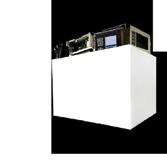


Radwell.com UNWANTED INVENTORY TAKING UP VALUABLE SPACE? Radwell.com purchases industrial automation product BENEFITS - Lower warehousing costs - Increases cash flow - Liquidate aging inventory - Liquidate slow-moving inventory - Eliminate used or overstock inventory - Increases warehouse space - A better option than placing it in a dumpster - Go Green Selling your surplus inventory to us gives you a financial return on products you’d normally pay to have it disposed of. Radwell’s Asset Recovery Service always provides FREE freight service for your surplus stock. hether you have one facility or multiple our Asset Recovery program is an exceptional resource for your company. We offer cash for parts and products you don’t need. In many cases, selling your excess inventory to Radwell gives you the opportunity of adding dollars SELLING TO US IS AS EASY AS Gather it 1. 2. 3. Box it Arrange free pick up Radwell.com - 800.884.5500 - sellto@radwell.com 5/22/2020 4:20:26 PM Whether you have one facility or multiple facilities, our Asset Recovery program is an exceptional resource for your company. We offer cash for parts and products you don’t need. In many cases, selling your excess inventory to Radwell gives you the opportunity of adding dollars to your bottom line. BENEFITS • Lower warehousing costs • Increases cash flow • Liquidate aging inventory • Liquidate slow-moving inventory • Eliminate used or overstock inventory • Increases warehouse space Radwell.com Radwell.com UNWANTED INVENTORY TAKING UP VALUABLE SPACE? Radwell.com purchases industrial automation product BENEFITS - Lower warehousing costs - Increases cash flow - Liquidate aging inventory - Liquidate slow-moving inventory - Eliminate used or overstock inventory - Increases warehouse space - A better option than placing it in a dumpster - Go Green Selling your surplus inventory to us gives you a financial return on products you’d normally pay to have it disposed of. Radwell’s Asset Recovery Service always provides FREE freight service for your surplus stock. hether you have one facility or multiple our Asset Recovery program is an exceptional resource for your company. We offer cash for parts and products you don’t need. In many cases, selling your excess inventory to Radwell gives you the opportunity of adding dollars SELLING TO US IS AS EASY AS Gather it 1. 2. 3. Box it Arrange free pick up Radwell.com - 800.884.5500 - sellto@radwell.com 5/22/2020 4:20:26 PM Radwell-FC-01-2022.indd 1 12/16/21 3:32 PM IndustrialMachineryDigest.com | March 2023 North America’s Manufacturing Resource for Industry Professionals Since 1986 Amp Up Packaging Productivity with Robots Talking Shop with: Dr. Daniel Engels — Consultant, Professor, CTO, Cybersecurity & IoT Expert Don’t MES with SCADA or MOM will be Upset! Maximizing Automation Benefits through Software Forecasting CHIPS for Chips Advantages of Automated Warehouse Conveyor Systems Digitalization — Next Stops On Your Journey Robots-as-a-Service in the Warehouse. Want PEAK with that? Preventing Workplace Injuries in Load Handling

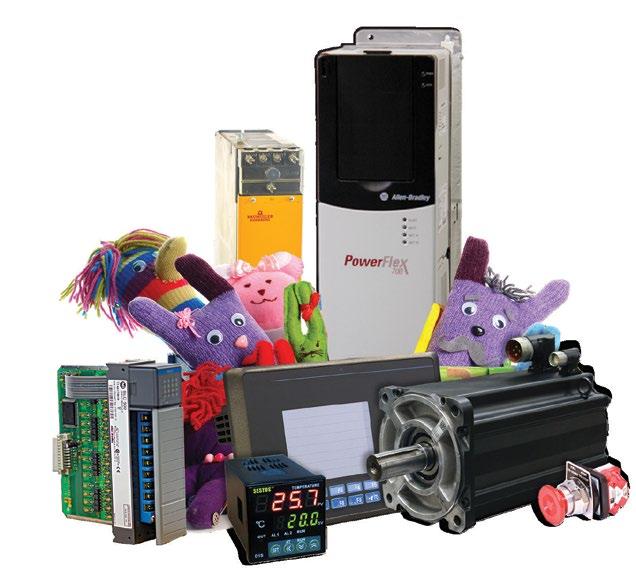

Sell us your unwanted industrial automation product. Radwell.com - 800.884.5500 - sellto@radwell.com UNWANTED INVENTORY TAKING UP VALUABLE SPACE?
Clamping solutions for all types of machines


Strong clamping pressure for small clamping torque

Highly adjustable through integrated sliding plate
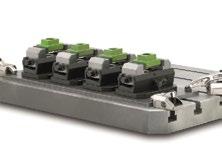

Fast clamping, short set-up time, quick release action
Step-less adjustability horizontal and vertical




Our MQ Series may be used as an extension to the machine plate








LENZKESUSA.COM | 540-381-1533 | INFO@LENZKESUSA.COM LENZKES MINIMIZES YOUR SET-UP TIME. WITH OVER 40 YEARS EXPERIENCE AND OVER 100,000 SATISFIED CUSTOMERS WORLDWIDE, LENZKES IS RENOWNED FOR ITS HIGH-QUALITY WORK-HOLDING SOLUTIONS MAXIMIZE YOUR PROFIT.
SPARE PARTS & ACCESSORIES MULTI-QUICK SERIES CHAIN CLAMP MULTI-QUICK SERIES SELF-CENTERING VISE THE LENZKES DIFFERENCE:
10 BUSINESS 4.0
robots-as-a-Service in the Warehouse. Want PEaK with that?
 By: Trey Bell
By: Trey Bell
16 TaLKING ShOP
Daniel Engels
Consultant, Professor, CTO, Cybersecurity & IoT Expert
28 SaFETY & MaINTENaNcE Preventing Workplace Injuries in Load handling

4 | IMD March 2023 Table of ConTenTs feaTURes 30 MaNUFac TUrING ShOWcaSE amp Up Packaging Productivity with robots By: Chris Caldwell, Product Manager at Yaskawa America Inc. – Motoman Robotics Division 34 INDUSTrIaL aUTOMaTION Don’t MES with ScaDa or MOM will be Upset! Maximizing automation Benefits through Software 36 WOrKFOrcE DEVELOPMENT Forecasting chIPS for chips By: Trey Bell 40 PrOcESS advantages of automated Warehouse conveyor Systems By: Jake Rheude 42 INDUSTrY INSIGhT Digitalization — Next Stops On Your Journey By: Rajas Sukthankar, Vice-President Digital Industries — Motion Control, Siemens Industry, Inc.
ColUMns
DePaRTMenTs 6 EDITOrIaL DIrEc TIONS 8 INDUSTrY NEWS 44 PrODUc T ShOWcaSE 48 SUrPLUS BUYING & SELLING 49 cL aSSIFIEDS 50 aDVErTISEr INDEX on THe CoVeR cover Sponsor: radwell International Photo: courtesy iStock Photos.
DIE GRINDERS & DISC SANDERS
DESIGNED FOR PEAK EFFICIENCY

– Durable, American made air tools are ideal for rapid material removal, deburring, finishing and polishing.





– Straight-Line, Right Angle and 7° Offset models offered in front and rear exhaust configurations.
– Tools available in horsepowers ranging from .3 hp to 3 hp, with speeds ranging from 3,200 RPM to 100,000 RPM.
Contact us for a Free Tool Demonstration!
PROUDLY DESIGNED, ENGINEERED AND BUILT IN AMERICA SINCE 1969 Dynabrade, Inc. | 1.800.828.7333 | dynabrade.com | WE LISTEN. WE OBSERVE. WE INNOVATE.
Digitalization vs Digitization?
I know they are technically different, but it seems you can’t have one working successfully without applying the other. We have a lot of content this month that we have digitized that will provide thought leadership and knowledge as you move to a digitalized environment. In keeping with our theme, most of our articles will all have something to do with Logistics and Load handling - in which we have been tangentially inclusive of warehouse automation.
Dr. Daniel Engels discusses IoT and security impacts in our Talking Shop interview entitled, “Zero Trust in a Big Data connected World - the IoT Evolution.” Dr. Engels has a way of bringing home the salient security issues - we all need to understand what is happening today.
In “robots-a s-a-Service in the Warehouse. Want PE aK With That?” we take a look at the service model concept and how it is changing the way we look at robotics. Great input from Kait Peterson at Locus robotics for this story.
Our Manufacturing Showcase this month features another view on robotic productivity from the Yaskawa america, Inc. Motoman robotics Division including high-speed parcel induction, high-mix kitting, flexible case packing, and mixed-case palletizing.
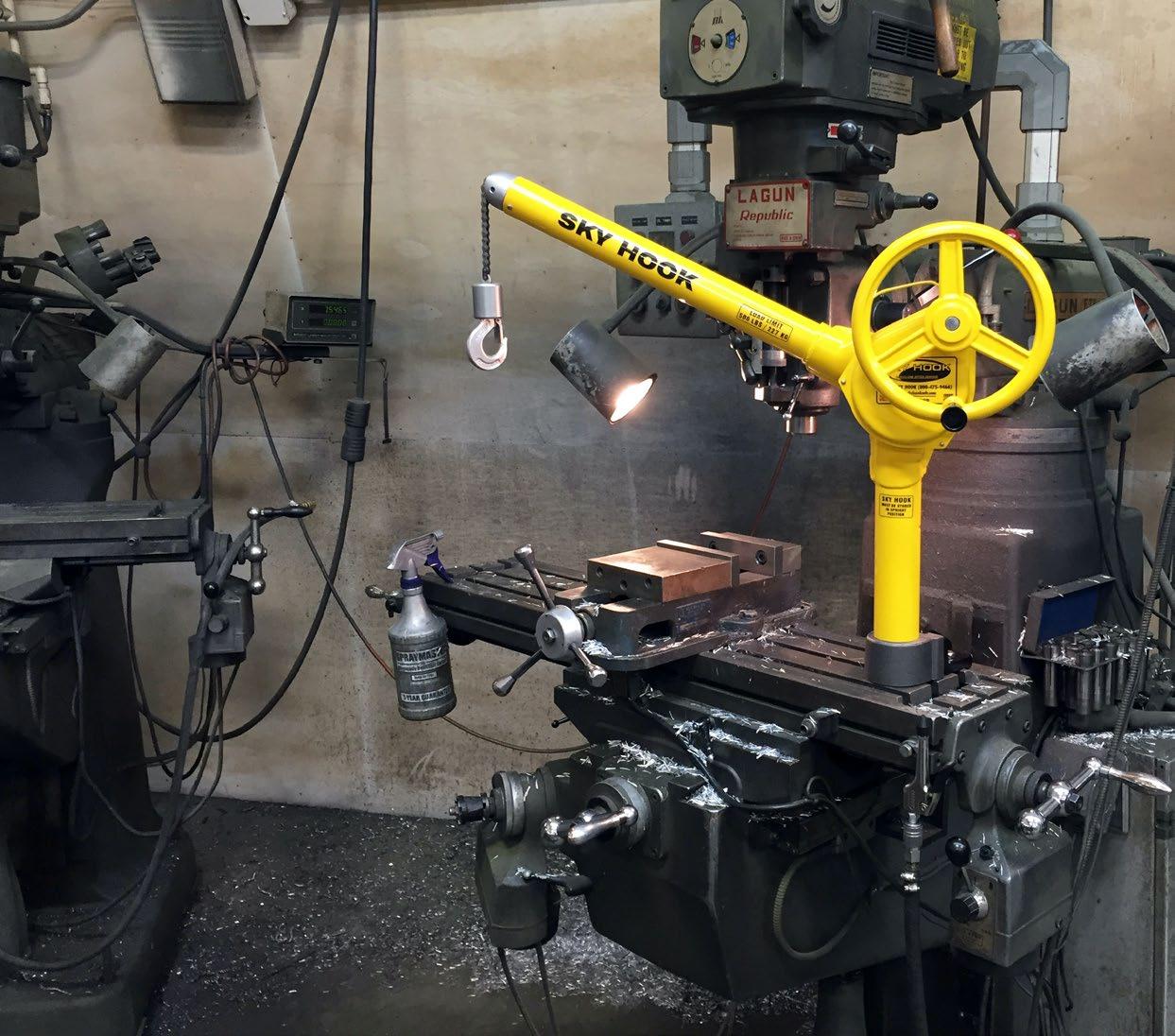
In Workforce 4.0 we look at the chIPS and Science act which was signed into law last august. “Forecasting chIPS for chips” reviews the profile of the $280 billion investment being made by the United States into the semiconductor industry over the next 10 years. This is something all our Industrial Machinery Digest readers should read, as funds for various advanced manufacturing elements - from processes to skilling up workers - are available via application or proposal processes being managed by the National Science Foundation or Department of commerce or Department of Energy. Other incentives include over $24 billion in tax credits which are available. The focus is the entire semiconductor ecosystem, not just semiconductor fabrication. Go to chIPS.gov for other information.
“The advantages of automated conveyor Systems” is from one of our at-large contributors and we complement that with a Safety section article “Preventing Workplace Injuries in Logistics and Load handling” in which we discuss the types of lifting injuries, and a couple of options available to deploy for safety improvements.
We round out our edition with an Industry Insight article by a VP from Siemens entitled “Digitalization - Next Stops on Your Journey.” rajas Sukthankar, Vice-President Digital Industries — Motion control discusses the cloud and functionality being provided in the cloud.
Keep on building.
Trey Bell – Editor in Chief trey@indmacdig.com
William C. Strickland III, Publisher william.strickland@indmacdig.com

800-366-0676 ext. 103 | Fax: 866-826-5918
Trey Bell, Editor-in-Chief trey@indmacdig.com
800-366-0676 ext. 104 | Fax: 866-826-5918
Shane Bell, Creative Director sbell@indmacdig.com
SALES
Lisa Hanschu, Sr. Account Executive lisa@indmacdig.com 785-965-9159 | Fax: 785-965-7199
William C. Strickland III, National Sales 205-903-9178 | fax 866-826-5918

Adrienne Gallender, Media Adviser agallender@indmacdig.com 888-407-7737
Susan Strickland, Accounting susan@indmacdig.com
205-542-1098 | Fax: 866-826-5918
CIRCULATION & SUBSCRIPTIONS
IMD, 3590-B hwy 31 South, Suite 233, Pelham, aL 35124 circulation@indmacdig.com | Fax: 866-826-5918
REPRINTS
To purchase article reprints please call 800-366-0676 ext. 103 or email wstrickland@indmacdig.com
source media llc 360 A PUBLICATION OF:




Source 360 Media LLC
3590-B hwy 31 South PMB #233 Pelham, aL 35124
INDUSTRIAL MACHINERY DIGEST (ISSN 1542-5223) is published 12x per year by Source 360 Media. POSTMASTER: Please send change of address to INDUSTRIAL MACHINERY DIGEST, 3590-B US Hwy 31 South, PMB 233, Pelham, AL 35124. Printed in the U.S.A. SUBSCRIPTION POLICY: Individual subscriptions are available without charge in the U.S.
6 | IMD March 2023 eDiToRial DiReCTions
to qualified individuals. Publisher reserves the right to reject nonqualified subscribers. One-year subscription to nonqualified individuals in the United States: $96.00. Single copies available (prepaid only) $20.00 each. Alabama Automotive Manufacturers Association SERVING AMERICAN MANUFACTURERS FOR OVER 37 YEARS North America’s Manufacturing Resource for Industry Professionals Since 1986










Lifting
Application
Lifts up to 500 lbs! Ergonomic Portable Lightweight Meets OSHA & ASME
Customized Safety
Devices For Any
SAFETY FIRST Prevent Lifting Injuries
Airbus Commercial Selects Altair SimSolid in ZEROe Sustainable Aircraft Initiative
Altair SimSolid will streamline Airbus teams in their development of the world’s first zero-emission commercial aircraft altair (Nasdaq: aLTr), a global leader in computational science and artificial intelligence (aI), announced that airbus commercial has selected altair SimSolid – the game-changing simulation technology that performs structural analyses on fully featured caD assemblies within minutes – in its ZErOe global initiative, which aims to create the world’s first zero-emission commercial aircraft.
“altair SimSolid is the premier simulation technology for engineers, designers, analysts, and manufacturers. It eliminates geometry preparation and meshing, which are the two most time-consuming, expertise-extensive, and errorprone tasks in conventional structural simulations,” said Sam Mahalingam, chief technology officer, altair. “airbus choosing altair SimSolid further solidifies altair as a leader in worldwide sustainability initiatives and continues the two companies’ long and fruitful history of successful collaboration.”
altair SimSolid will save a irbus’ design and engineering teams time, money, and hassle. altair SimSolid was selected because it has shown that it will reduce elementary part analysis delivery times from days to minutes, and cuts complex assembly delivery times from several months to less than one week in some cases. additionally, altair SimSolid’s intuitive, easy-to-implement operations and interface lets users work without needing to clean geometry or prepare models beforehand. altair SimSolid also allows airbus’s design and engineering teams to explore more design iterations in shorter timeframes, which will expedite project timelines and deliver sustainable innovations quicker.
“By using altair SimSolid, our teams can explore more design possibilities in a simple, easy-to-implement environment,” said christophe Brand, head of airframe methods and tools, a irbus commercial. “By not requiring our teams to clean geometries beforehand, altair SimSolid helps us significantly reduce delivery times and build better products. With it, we look forward to building the future of zero-emission aircraft technology.”
The ZErOe project aims to create the world’s first hydrogen propulsion-powered commercial airline fleet and enables a irbus to explore a variety of configurations and hydrogen technologies that will shape the development of future zero-emission aircraft. a irbus is working towards a mature technology readiness level for a hydrogen-combustion propulsion system by 2025.
Survey of Industrial and Process Manufacturers Shows Investment in Cloud ERP Leads to 1.5X Revenue Increase Over On-Premise Solutions
New Research Delivers Insights into Manufacturing


Industry’s Growth Priorities for 2023
aptean released new industry research highlighting the role digital transformation continues to play in driving growth for industrial and process manufacturers even in the midst of a challenging economy. The study reveals that manufacturers using cloud-based ErP software increased revenue at a higher rate in 2022 than those using on-premise software. Manufacturing organizations that have implemented a cloud ErP reported average year-over-year revenue growth of 8.3% in 2022, compared to 5.5% among manufacturers that have not moved to the cloud.
In 2023, manufacturers surveyed are focused on navigating four major obstacles: rising inflation, availability of materials, labor shortages and the cost of doing

8 | IMD March 2023 inDUs TRy news industrial Machinery Digest's industry news features the latest news and press releases from some of the industry's top companies. WANT TO BE FEATURED? Send your press releases to editorial@indmacdig.com www.IndustrialMachineryDigest.com INDUSTRY NEWS
business. 89% expect digital transformation will play a critical role in driving efficiencies needed to combat these barriers to growth and a third have already invested in new software to help them manage rising costs. Significantly, 98% of manufacturers reported having some form of digital transformation roadmap and 54% have an advanced strategy.
The research was conducted by aptean and B2B International between September and October 2022. Over 250 manufacturing companies in North a merica participated in the survey, representing a variety of sectors including electrical equipment, fabricated metals, industrial machinery, chemicals, pharmaceuticals and personal care products. The study identified four key trends that reflect the top challenges facing the industry in 2023 and how manufacturers plan to meet them. These insights and the full research findings are now available in a new report, The aptean 2023 Manufacturing Forecast: Industry Insights from Industrial and Process Manufacturers.
“Today’s manufacturers have learned from experience that an agile business can be more competitive in times of rapid change,” said TVN reddy, cEO at aptean. “a s organizations work to overcome inflation, supply chain issues and other barriers to growth, those that rely on modern, cloud-based software solutions to lower costs and increase efficiencies will continue to experience better outcomes and ultimately, higher revenues than those who are less mature in their digital transformation strategy.”
additional insights in the report include:
» how manufacturers plan to strengthen their supply chain in 2023
» What steps manufacturers will take to improve operational efficiency and control the cost of doing business
» how technology is helping manufacturers attract and retain skilled workers
To learn more about aptean and the markets we serve, visit www.aptean.com.
CGTech Celebrates 35th Anniversary
cGTech, developer of VErIcUT cNc machine simulation software, is proud to celebrate 35 years of growth and innovation in cNc simulation and optimization in 2023.
“Whether it's milling, turning, mill-turning or any other cNc-machining, VErIcUT® is the industry standard to simulate cNc machines, as well as optimize and verify Nc programs,” says Margaret Schmitt, President of cGTech.
“For 35 years, cGTech’s technology leadership and experienced team have helped VErIcUT evolve together with our customer base. cGTech’s solutions are deeply entrenched in the aerospace industry’s history, and adopted today across industries ranging from oil and gas to Formula 1 racing. People are at the heart of cGTech’s success and have made it what it is today: an innovative software company driven by team spirit and customer care.”
cGTech was founded by Jon Prun in 1988, when he recognized the need to verify N c tool path programs without taking valuable machining time to prove-out a part. VE r I c UT was the first widely available method to test machine tool paths in a virtual environment. The software has grown to be the leader in the N c program verification space and has since expanded its original capabilities to include physicsbased optimization with its Force module, composites programming and simulation, as well as additive and hybrid processes.
VE r I c UT is 100% developed in-house by software engineers and leaders experienced in manufacturing and the ca D/ca M space. Improvements are made with each release to support complex multi-axis kinematics, further reduce cycle times, increase tool life, and further optimize the simulation. New features are also continuously being developed, including live c N c machine monitoring features, tool performance optimization, and more.
“In my 30+ years with cGTech it has been amazing to see this company grow globally, to satisfy even the most demanding N c manufacturing needs. I’m so proud to be part of the abundantly knowledgeable and creative staff at cGTech,” says Gene Granata, Director of Product Management. “Together, we truly enjoy applying our collective experience supporting our valued customers, helping them be more competitive and create parts as efficiently and safely as possible.”
h eadquartered in Irvine, c alifornia, cGTech has offices are located in the United Kingdom, France, Germany, Italy, Japan, c hina, Singapore, India, Brazil, and Korea to support customers located around the globe in virtually every manufacturing industry. cGTech hosts local VE r I c UT User Exchange (VUE) meetings annually across the globe to connect with customers to support their growth and needs.
“VE r I c UT protects our machines from damage due to collisions and gives both the programmer and the machine operator a feeling of safety in their daily work,” says Werner G., ca M System c onsultant and M a N Energy Solutions. “[VE r I c UT] reduces strain on resources on the shop floor through shorter run times and less machine downtime. Wishing cGTech all the best for the 35th anniversary. Keep it up!”
cGTech is committed to strengthening its offers in verification and optimization, as well extending upstream to post-processing through the recent addition of I ca M Technologies c orporation to Sandvik, and downstream to connectivity using real-world machining data and performance.
cGTech is thankful for the continued support of its customers, from those who have just purchased the software to those who have been using VE r I c UT since its first version. The company will continue to build its value proposition for customers across the digital manufacturing workflow.
INDUST rI a L MACHINERY DIGEST cOM IMD | 9 IMD – North America’s Manufacturing Resource for Industry Professionals Since 1986
Robots-as-a-Service in the Warehouse. Want PEAK with that?
 By: Trey Bell
By: Trey Bell
As a teenager growing up building lake houses and piers, I never thought about robots but they certainly would have been useful. I had a side gig cutting grass for many of the folks in my Grandad’s neighborhood. a knock on a door, a 30 second negotiated rate, and someone could wake up on Saturday to either the summer scent of their fresh cut yard, or the automated rumbling of a non-propelled lawn mower being pushed across their yard, with the occasional shot gun sound of a pebble that was being processed. While to me it was money for cutting grass, the actual value being delivered to my customers was completely outside my realm of understanding at that time. Implied and included in the grass cutting service was 1) delivery of the lawn mower (capital equipment) and me to the cutting site, 2) fuel for the lawn mower, 3) expenses associated with getting the blades periodically sharpened so the grass wasn’t brown from a coarse cut, 4) standard consumable expenses like new mufflers, new blade guards, new oil and air filters, and new oil, and 5) a commitment to making sure the service was performed on-schedule (thanks to my Grandad’s
help). Eventually with a new weed-eater, a set of manual hedge clippers, and an edging device, the grass-cutting activity evolved to a yard maintenance service. It was a win-win situation where my clients were able to pay a single amount and get a delivered aesthetic enhancement, and the accompanying pride, to their homestead, without the need of ownership of all the components required to deliver the result. The client paid a few dollars for turn-key reliable execution of something they were not necessarily skilled to do, or “garage-enabled” (e.g. lawn equipment) to complete. It was a foundational service model.
Back then, the yard maintenance service was being delivered using equipment that was likely specified, designed, assembled, and shipped by a single company. Today, it’s possible that the design of the lawn mower was outsourced to a design house by the manufacturer of the device. If the lawn mower is an autonomous cutting device, driven by wireless communication to a logic controller, then it’s likely the electronics manufacturing was outsourced to a contract manufacturer, and the selling company now only worries about intellectual property
10 | IMD March 2023 bUsiness 4.0
AMERICAN-MADE SHEARS & PRESS BRAKES



Hydraulic Shears: 1/8” (10GA), 3/16”, 1/4”, 3/8”, 1/2”, 5/8”, 3/4”, 1” and 1-1/4”
Press Brakes: 50-Ton to 550-Ton
C-Frame Presses: 40-Ton to 200-Ton


Custom Designs: for Custom Applications


Retrofit Backgauges: for Shears and Press Brakes. Made to fit most machines with minimum modifications.
Precision Knife Sharpening

For over 50 years! www.betenbender.com Call for a free catalog! Phone: 319-435-2378 | Fax: 319-435-2262 | sales@betenbender.com
and marketing. In either case, the distribution of the finished units have probably been managed by a third party logistics provider (3PL) before eventually making their way to an end customer. Undoubtedly there is software capability provided to the autonomous cutting device from a mobile phone or from the cloud via cellular or WiFi access - with possible replacement part notifications and service upgrades for mapping or other new features being included in the purchase plan for a subscription that communicates how effective the device is performing, based on analytics from the cloud interaction. a nd the cloud infrastructure is yet again a newly mainstream model for data and compute, likely a technical infrastructure service to the OEM. Service models come in all shapes and sizes, and are rapidly evolving, with new derivative models bifurcating old models each day.
Speed of Innovation
The drivers for the rapid evolution of service models were spawned with the discovery of the integrated circuit in 1958 by an electronics engineer at Texas Instruments named Jack Kilby. Following that discovery, around 1965, one of the founders of Intel, Gordon Moore, postulated that approximately every 2 years, the number of transistors on microchips would double. Moore's Law as it has become known, suggested that computational progress would become significantly faster, smaller, and more efficient over time. The manifestation of this prediction can be seen with computing capabilities that have migrated

away from central mainframes, to client-server computing, to desktops and laptops, and now to edge devices that are mobile, connected via Bluetooth, Wi-Fi, or any number of wired connections. a n endpoint device held in one’s hand, now has more compute power than original space program launches utilized.
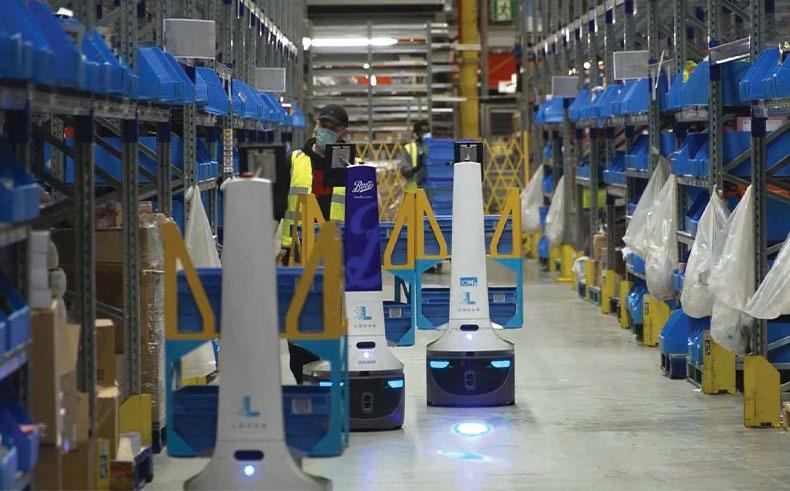
With this exponential increase in compute power, new software languages have been created with more extensive, more creative, and more user-friendly capabilities. With code that can be interpreted on the fly and can self update, software development methodologies have enabled and embraced rapid prototyping approaches, increasing the speed of enhanced feature deployment and development for varying platforms.
The torrential pace of innovation has forced most companies to face an introspective analysis yielding the best strategic approach of deploying both human capital and hard dollar equipment capital. companies that have dismissed the need for candid introspection have likely seen dilutive impacts to income statements, as the cost of non-core innovation increases SG&a and developmental budgets with limited return prospects. New ideas about physical supply chain and back office optimization were adopted - creating a web of logical nodes and service offerings like 3PL outsourcing, Business Process Management, Business Process Outsourcing, Softwareas-a-Service. Now, as geometries of packaged systems and hardware have shrunk while maintaining form and fit and function, device bundles have begun appearing in the
12 | IMD March 2023
service offerings, and likely as mobile and untethered IoT connected devices.
Robots in the Warehouse advancements in both software and hardware capabilities have created new opportunities for robotic automation in the supply chain as well, especially in the warehouse. Kait Peterson, senior director of product marketing at Locus robotics (on Twitter @supplychainkait), believes that the access to hardware technologies like LIDar (Light Detection and ranging) that measure distance, shape, and orientation of 3D objects with the use of lasers, as well as access to sensing technologies and the expanded availability of sensors have been important drivers to advanced robotic capabilities over the past 10 years. “LIDar and sensing technologies, and being able to sense moving objects and respond quickly to those moving objects with intelligent actions, that consider safety and braking systems, have all advanced significantly. The hardware components are slimmer, easier to work with, and much more affordable, as well as more technologically advanced.” Peterson goes on to say that this evolution of hardware ultimately has enabled more scalable solutions compared to typical massive, fixed robotics that required huge investments.
The other side of the robotics evolution is the capacity for software to create better interaction of robots with the world around them. Says Peterson, “Over the past 10 years, we’ve really innovated by leaps and bounds with our software capabilities, incorporating advanced features like artificial intelligence and machine learning. We are using software to put our robots on a Locus network. You can add a bot to a network in a warehouse that has been mapped, and it can join the group and become immediately productive. Learning is like a hive mind. The robot joins the hive, and joins all the learnings that have been accumulated collectively by all the robots in the warehouse. So you don’t have to have each incremental robot learn the same thing over and over again. This is due to software gains.”
A New Way to Robot
robots can be shipped to a site, unpacked and added to the fleet in

minutes, and be productive immediately - that is just one of the benefits of the Locus robotics robots-as-a-Service model. Says Peterson, “The customer doesn’t purchase the robots. They rent the robots from us. Locus owns all the robots. We take full responsibility for their hardware, their software, all the maintenance, everything involved in the technology. So the customer has no burden to have to deal with a robot.” The service includes Locus Dashboards with real-time analytics tied to the customer and their sites directly. Locus’s Global Services Team also monitors the operation 24/7, and has access to all the dashboards and data being captured in each facility.
“We can do proactive maintenance or help identify what is going on when the customer says there are issues. Maybe they are seeing performance issues in an area - we have full visibility to that and can let the customer know. Maybe a forklift has run into a robot or some congestion has occurred in an aisle because something has fallen or is otherwise blocking the path of the robots. a nalytic dashboards in the warehouse show on the warehouse map the location of the robots, and orders waiting to be picked.
You can see individual associates’ performance as well through our gamification engine that shows who is leading the pack for the day.”
Instead of tying up capital for 20 years in a highly engineered, newly automated, capital intensive facility, in which a greenfield location may take 10, 15, or even 20 months before being operational, without steel or other raw building material delays, and the startup period with negative cash flow (depreciation, buildout, other), the robot-as-a-Service model lowers the cost for entry into robotic driven automation with the subscription model. rOI can be measured in months, and can be based on maximizing throughput in existing warehouse facilities.
Want Peak with That?
In a typical arrangement, Locus robotics begins with the standard raaS agreement with flexibility available to temporarily add robot capacity to meet seasonal cycles of demand. Dialing up and down on the number of robots is part of the Peak plan for Locus robotics. Peterson says, “Some of our customer high points are during the holiday season. So from about October to the end of December, a lot of our customers, particularly in the ecommerce and retail side, have massive spikes in ordering and they have to deliver to their customers. We can drop in another 100 bots or more
into their warehouse, and they use the bots to increase warehouse throughput for that period of time. a nd when they are beyond the peak, they can keep as many as they want or they can send them back to Locus. a nd the easy part of that is that it is literally the robot arrives via shipment, you unbox it, you turn it on. You point it at what's called a Locus Point, which is a Qr code, that’s located through the warehouse so it knows where it is on the map. a nd it immediately joins the rest of the robots in the queues, in the processing, in the optimization, in the map. So there’s nothing else the customer has to do to increase the capacity of their robot fleet.”
It isn’t just flex demand that's included in the robots-asa-Service model - its access to Locus people, and ongoing innovations in the software and hardware. You are getting an always updated robot solution platform and access to support resources with industry knowledge and proactive notifications for improved efficiency. rather than commit to a technology maturity at a point in time, the customer commits to continued innovation via a service provided.
Warehouses Then and Cobots Today
Peterson says, “In the warehouse of 10 years ago, you had lots and lots of shelves with lots and lots of products. a nd if you wanted to pick more orders, or put more orders through the warehouse, you needed more carts and you needed more people. The thought process was, if I can put a bigger cart with the people they could pick more orders as they’re walking through the warehouse, but everything is about walking and pushing or pulling a cart. That creates tons of stress on the humans that are working. People are walking untold miles. They’re pushing big, heavy carts. They’re coming around corners, they’re crashing carts into each other, they’re getting ankle, hand, and back injuries. The ops guys in the warehouse are sitting in their tower thinking ‘oh, get a bigger cart, and that will be better.’” This is a recurring theme, and one that isn’t the safest to be around - one customer even was quoted as calling their carts “widowmakers.”
Locus robotics autonomous mobile robots ( a Mrs) can make decisions in the warehouse to solve problems without having to shut down warehouse operations when there is a hiccup - which is a stark contrast to autonomous guided vehicles ( aGVs) that have specific lanes in which to operate. Solving an aGV issue in the warehouse requires something that is similar to a “reboot”, a shutdown and restart of all the linked units. Not so with a Mrs, which can be individually directed - if the unit doesn’t determine the best approach on its own. The a Mrs work collaboratively with people, and are added into the warehouse workflow to replace carts, walking, and movement. contrary to popular belief, it isn’t to replace people. “People only walk a few miles in their section of the warehouse, “ Peterson says, “they’re putting the products on the robot, they aren’t carrying anything. The only lifting is from the rack to the robot, and they’re not getting into any accidents from running carts into people.”
This cobot concept leads to better work environments in today’s warehouses. The cobot approach for Locus robotics is enabling humans to do their jobs more efficiently, more effectively, and more safely. Still, opportunities for further improvement in the model exist. “If you look at it, there is one problem that industry has been fixated on, and you will see a lot of startups around it, “ says Peterson. “It’s this idea of replicating human hand and arm movement, the human body, with an ability to sense and understand the amount of pressure to pick something up. For instance the amount we need to pick up an apple is different from a large pillow or small pen.”
Kait Peterson goes on to say, “This is something that we have not fully been able to replicate on a technology or hardware side. That’s an example of a problem being worked on, but nowhere near being operationalized in a way that can be used at mass scale, so you can see all the different ways of people thinking about robotic arms picking and how do you not crush the apple but you pick up the pen properly. There is so much value to human beings and how humans think about problems, and how we interact with the things around us. We can’t be fully replaced yet and it's a while off in the future. all the technology being operationalized in warehouses today [for our customers] is enabling humans to extend our capability.”
Benefits Now and Looking Forward
robots-as-a-Service is here to stay, and generating real returns. In the latest holiday season, Peterson ran an informal test with two online merchants. One of the merchants was using Locus robots in their warehouse, with Peak capacity - while the other merchant was not a Locus customer. The order which was placed with a customer using Locus robots in the warehouse was fulfilled in 45 minutes and arrived within 48 hours. The non-customer took over 10 days to be delivered.
Peterson believes that many factors may impact warehouse workflows in the future. For instance she recalled an innovation lab at one of her customers that was using virtualization for forklift driving- a forklift driver in alabama could be driving an autonomous forklift located in a Texas warehouse for loading and unloading. She also believes creating an ecosystem of different automation providers to work together in providing solutions that fit unique customer needs is critical for the warehouse automation of tomorrow. “The one thing that we don’t have now in the warehouse automation space is the ability to go to one vendor for all of your solutions. You think about in the software space, you think about mega vendors like Microsoft and Oracle, you can go to one provider. That doesn’t exist in warehouse automation right now and it's going to be a long time before it does.”
“The next big thing is something in the industry that we call interoperability, or the ability to put solutions together, to create a whole warehouse of automation,” says Peterson. and she is on to something here. In a
14 | IMD March 2023
recent study released by consulting giant accenture, called “Value Untangled,” accenture found that companies with high interoperability grew revenue 6x faster than their peers with low interoperability, and are set to unlock an additional five percentage points in annual revenue growth.


The future of the warehouse is the multi-faceted solution. It’s replacing manual forklifts. Peterson’s view is that these can be replaced by autonomous forklifts or pallet movers and incorporate autonomous put away, which means putting product from pallets into shelving units and transferring to the pallet storage of the warehouse. Picking will be human to robots or robotic arm to a robot - to go out to the packout station or the sortation wall. The sortation wall will be automated in a way that can handle massive amounts of orders and break them up into individual orders that need to go out to customers. automated outbound flows include conveyor tops, big pallets, automatic wrap and load, all resulting in the fewest number of human touches possible.
Customize Your Order

While you could call today to place your order for warehouse robots, it is probably best to let Locus take a look at your operation to help you understand your bottlenecks. “We call it a cOO or concept Of Operations. We look at how the facility is running today, and what
it would look like tomorrow if we were to put in Locus solutions. how will it run tomorrow and where are the improvements? a nd it's very detailed. We do floor mapping. We make sure that the problems that are identified and what the solutions should be are very well understood.”
The solution architecture is tailored to meet the specific needs of the customer. IT integration risks have been mitigated with Locus robotics' comprehensive set of aPIs to major WMS systems. Out of the box, there are minor tweaks to fit most customer systems. Time to value is compressed, and warehouse robots can be operational within a short period. a nd when new releases of robots occur, they can be swapped for existing units - aligning with many environmental goals.
Lastly, the focus on security of data is huge in today’s industry, and the robots-as-a-Service model has the benefit of leveraging the provider’s resources. Locus robotics has a chief Security Officer dedicated to ensuring all the latest patches and updates are implemented and deployed so that customers’ data and operations are safe and secure.
The robots-as-a-Service model provides faster returns on effort and committed time, periodic software updates, periodic hardware upgrades, and real money savings to start a warehouse automation journey. The only real question remaining - do you want Peak with that?

INDUST rI a L MACHINERY DIGEST cOM IMD | 15 Form your own inserts. • Cost savings (up to 90%) • High load threads - stronger joints • High process reliability • Faster production cycles Advantages & Benefits • No special machinery required • Small investment • Increased material thickness • Long tool life 773-290-1040 | info@formdrill-usa.com | www.formdrill-usa.com • Chipless process • Innovative technology suitable for steel, stainless steel, copper, brass, and aluminum Drill. Tap. Assemble.
feaTURinG:
Educator. Researcher. And Expert.
RFID, IoT, Cybersecurity, and Data Science/AI/ML

Dr. Daniel Engels is a “recovering” professor, currently doing consulting work in aI in the security and IoT areas. he has spent most of his career moving between academia and industry. currently he is an adjunct professor at Texas a&M and a research fellow at Southern Methodist University, working in their aT&T center. The SMU aT&T center for Virtualization is a premier research center at SMU with a mission to advance knowledge and practice of virtualized

computing, communication, and user experience. after earning his PhD from Massachusetts Institute of Technology, Dr. Engels joined MIT’s auto ID center, where he worked with the technology and standards which we currently use today as the EPc (electronic product code) system. he joins us to discuss the evolution of IoT from rFID and barcode, to data security needs. I’ve known Dr. Engels for over 15 years, and we dove right into the topic.
Zero Trust in a Big Data Connected World — The IoT Evolution
TB: Thanks for joining me today Dr. Engels. Tell us a little bit more about barcodes and r FID tags, and how that has evolved. Maybe start with the a uto ID center?
DE: Sure, thanks Trey. at the MIT a uto ID center, we developed and came up with a really cool technology where we were literally trying to connect the physical world to the virtual world. In trying to figure out what the killer application for such a really cool technology would be, we ran into folks at the Uniform code council (U cc), then subsequently Procter & Gamble and Gillette. We listened to them, processed the feedback, and figured out that the killer application for connecting the physical world and the virtual world is supply chain management.
TB: Well that sounds like a reasonable place to start, and certainly a point of emphasis for our readers.
DE: It was very, very reasonable. But the whole point of that system could be narrowed down to a single question: h ow do you take physical objects and identify them, automatically connect them to the virtual world, process and read information about them, or maybe just identify them in the virtual world? Then figure out what to do with it, what it is and everything else.
TB: That sounds like it wasn’t just classes of things, but rather discrete instances, where everything would have a virtual “license plate”?
16 | IMD March 2023
TALKING SHOP WITH: Dr. Daniel Engels — Consultant, Professor, CTO, Cybersecurity & IoT Expert
TalkinG sHoP
DE: a bsolutely correct. The ubiquitous barcode that we’re all familiar with, which had been originally developed in the 1970s by the U cc , didn't really begin adoption in the retail supermarket until the early 1980s. The catalyst was a label change required by the FDa to include ingredients and calories on all the foods that we buy. In those times, the barcode had a scanning lifespan of one time - at checkout. Fortunately for us now, barcodes can be used in a much broader range of applications, including back-end processing like your Starbucks a pp.
We were doing these types of things at the a uto ID center, back in the time when 96k modems were all the rage. Believe it or not, there are probably several 96k modems and slightly faster modems still in use today. Typically the most remote facilities are on modems and not high speed internet. With Wi-Fi in the home, and fixed and mobile broadband everywhere, it’s surprising that 96K modem connections are still out there. But they are. connectivity though was not available all the time. This drove us to develop the EP c system around r FID (radio frequency identification) tags that carried the data instead of barcodes.
We made another observation while defining the protocols and developing tags. Tags generate a huge amount of data when r FID readers are reading them, and that data needs to be managed. In the early days we had middleware processes to enable management and filtering closer to the edge. The functionality closer to the edge would push the data into a back end database. The edge functionality, our EP c servers, were there to capture the data, collate the data, store the data. The result was a local server with information accessible from various applications. These applications could mine the data then do something with the data more intelligently, but also allow that information to be potentially discoverable from somewhere else – whether it was public or private information or private corporate data – in the US or the world.
That was really the whole system. The EP c is just a unique identifier which is really a serialized GTIN (Global Trade Identification Number).
The number on a barcode today is a GTIN, identifying the class of product. The serialized GTIN adds a serial number that identifies the instance of that product. It's unique to that particular thing in the world. The EP c was just a way to store that information in a common form factor whether it was digital or human readable or machine readable. SGTINs allow you to uniquely capture

an item as it travels through the supply chain.
TB: Ok, so the first step in the merge of the physical world with the virtual representation is in the serialized GTIN. Was that the only step that needed to occur?
DE: The third part is the financial flows. When you merge the physical and virtual and truly see where things are going, track where they're going, manage where they're going and actually automate a lot of that, you can start automating financial flows, like auditing, controls, and billing and receiving.
TB: Makes a lot of sense. We can track almost anything through the supply chain on a discrete basis. I understand that link to IoT.
DE: Yes, but when you start thinking about tagging the world, there is a lot of data - which creates a lot of questions. Who gets to see that data? h ow is it viewed? What can be done with it? Who owns it? That is, maybe your data may be about you, but it isn't yours. Or is it owned by the guy that read it? Or somewhere in between.
Now you have a huge security problem. h ow do you protect the data so that only authorized people can read it? h ow do you ensure that you have some form of privacy? If somebody reads it, how do you protect that information? The good thing about r FID is that it's got a limited amount of data. The bad thing about r FID is that it's got uniquely identifying data even if it just has an identifier. If you carry multiple tags on you, even if they don't have a unique identifier, you now have
INDUST rI a L MACHINERY DIGEST cOM IMD | 17
IMD – North America’s Manufacturing Resource for Industry Professionals Since 1986
Close up of RFID tags and a barcode used for tracking and identification purposes.
a digital fingerprint from the combination of tags like Nike shoes and Levi pants and maybe a designer wallet. We're able to now uniquely identify you, not because you carry a unique identifier, but because you've got this constellation of tags. Then consider one of the benefits of r FID which is you don't need line of sight. You can read it at three or four meters. If you want to go illegal power levels you can read it at much longer range or stay within power levels if the tag is designed for longer range. Your toll tag, which incorporates the EP c protocol we developed, can be read with a standard legal reader at speed well over 50 feet away.
You now have tags on you that can then be read and used by nefarious people, which really got me into security for these very resource constrained devices. revere Security is a startup company that I joined as c TO where we continued to develop protocols for r FID tags, protocols for Sca Da devices, which was our original impetus. We also created a cryptographic cipher algorithm which to our knowledge is yet to be broken, even though we had lots of people really look hard at it. It's extremely lightweight, extremely durable, extremely good. But if you're going to use anything today, I would recommend a ES or public key cryptography unless you have special requirements.
I've been doing research and work at the intersection of IoT, cybersecurity and Data Science for decades even though on the surface someone may say “you're doing antenna design and you're doing cybersecurity, and
you're doing data science, they have nothing to do with one another.” Except in the world of IoT and cybersecurity and Data Science, all of them are merged together into one because they all are related.

Data science is really a broad field that encompasses your traditional data analytics database management, including all of your data engineering work that you would typically see, like database, data structures, data management, and how to analyze the data. If you're managing the database, setting post data structures, how do you organize your queries into it? The other piece is how do you manage it? So we get into this big data concept. When I started at MIT, the reason we needed the filters in the middle to do something intelligent closer to the edge was because we couldn't handle all the data. We didn't have databases or servers big enough. Today, it is called cloud computing. You don't have to filter everything on the edge, although we do for certain things. When you start thinking about that data science piece you have to think about how do you keep the data clean? Because if you get dirty data, any analysis of dirty data gives you bad results.
h ow do you move Big Data? You can't just analyze it all in one place because no computer has enough memory for terabytes of data. You’ve got to do it some other way. h ow do you partition that up? h ow do you then allow that to be analyzed? That's all part of data engineering. Based on what you know, how do you engineer the infrastructure?
18 | IMD March 2023
TB: Where do analytics fit in?
DE: That's all part of data science. Data science and a I, which is the big buzz word, are just applied statistics and applied data and applied computer science to data. 80% of what you need to know can be obtained through simple basic statistics. You can figure it out and do a lot with that. a s you get more complex insight requirements, we start applying the more advanced techniques like neural networks, and deep learning approaches, where advanced analysis comes in. It's typically referred to as a I. Today it starts becoming interesting and useful because now you're doing all these insights and you're starting to automate a tremendous amount of decision making.
TB: h ow does cybersecurity fit in?
DE: cybersecurity is very much different from Data Science. There's a lot of different types of cybersecurity, different mechanisms you can use. But they all try to do the same thing. In the computer networking world, and the database world, the operating system world, the application world, cybersecurity is all about providing confidentiality, integrity and authentication. The authentication includes authorization. You might be authenticated to do something or access an area, but not authorized to enter a particular room in the area.
In cybersecurity, while the mechanisms are very much the same across the spectrum, you have different algorithms and different protocols. You've got different objectives. attacks are all pretty much well known. The NIST Framework (National Institute of Standards and Technology “Framework for Improving critical Infrastructure cybersecurity”) will tell you all kinds of attacks and defenses against the various attacks. In cybersecurity the human is the weakest link. consider phishing emails. We do an ok job of identifying them, but they’re still arriving in the inbox. People still click on them causing malware to be downloaded into the whole security infrastructure. h ow do you apply the cybersecurity mechanisms and security framework? It's fundamentally flawed in most organizations in the way that operating systems and applications and networks were initially developed. cybersecurity was in most cases a complete afterthought.
TB: Why do you say that?
DE: Think about how computer networks have evolved over time. Originally it was a big mainframe sitting in a huge building, the ENI ac , as an example, one of the first electronic digital computers. a s we moved on to mainframes, it was okay because input and output required physical punch cards to feed and receive. That
DID YOU KNOW TORMACH SELLS PLASMA TABLES?

Premium features make better parts.
• Closed-loop servo motors for reliable accuracy
• Floating head with Digital Torch Height Control that help make cuts to uneven surfaces like corrugated metal
• Standard breakaway torch holder with collision detection to minimize machine damage if things go wrong
• Minimized run times with fast rapids (1,000 in./min., 400 in./min. cuts) and acceleration (30 in./sec.²)
• Integrated water table mounted on sliding rails, ideal for cutting pipes and larger parts
• The only plasma table built with PathPilot, Tormach’s award-winning CNC controller, and access to PathPilot HUB, Tormach’s browser-based version of PathPilot
INDUST rI a L MACHINERY DIGEST cOM IMD | 19
CNC MILLS | CNC LATHES | CNC PLASMA TABLES | CNC ROUTERS | INDUSTRIAL ROBOTS | AUTOMATIC FEED BANDSAWS
Learn more and build yours at tormach.com/1300PL/IMD
required physical security. I don't need security in the machine because I had physical security. a s you start getting “dumb” [character-based display functionality only] terminals out in the world, you start needing passwords and logins because you want to keep me from stealing all of your compute time which was the original kind of hacks and tweaks on mainframes.
From mainframes we then went to workstations. Workstations, like those from Sun Microsystems, were on desktops and moving the computing to the edge. Then you got to the P c s beyond that. Then the laptops and then your phones and now we've got IoT. That computing edge continues to extend. The interesting thing is, as we move that edge out, the functionality of the first laptops is probably less than what we had in the first cell phones, which is also probably about what we have in a lot of our IoT devices. So, think about that for a second. We have a tremendous amount of functionality in our IoT devices. h ow many of them are properly secured?
The answer is not enough of them. a nd r FID tags without security, most of them out there, allow a broad range of attacks. But you can make sure that they're protected or shielded, there are ways to do so. Now we start thinking about cybersecurity. The basic approach is all about cI a - confidentiality, integrity, authentication. h ow you achieve that evolves and changes, and it's always the human forgetting to configure it properly, or clicking on that phishing email, doing something they're not supposed to be doing or not doing something that
they really needed to do. That allows the attackers to come in. The intersection of cybersecurity and data science is all about automating a lot of that.

The original paradigm for security is trust, but verify. This worked for decades, but it worked in a non-completely networked world where mainframes existed and I knew everybody else that was using that mainframe. I knew everybody else that was on that specific network. During that era, there were only a million computers on the entire Internet. That was pretty easy from a security perspective. When there are billions and billions of items, and the Internet of things is there, you don't know everybody. But you're highly connected. You are very, very vulnerable because somebody all the way on the other side of the world can log into your machine. Doesn't matter how many firewalls you think you're behind or anything else. Someone can get there, someone can attack you. That is the problem of today.
In the trust but verify model, which is what we had at the beginning, that works great because I trust you because I know you and then I'll verify that you haven't mucked around with my account or otherwise changed things on me. The problem today is you don't know everybody. You should not be trusting everybody. a nd you really need to go to a verify-but-don’t-trusteven-after-you-verified world to consistently and continually verify.
That is continuously authenticate, to make sure that you're on the access list, authenticate on a continuing
20 | IMD March 2023
basis. This whole concept of zero trust is really a step in that direction. But today's tools and cyber tools are not in that mode, which is why you can download malware, even though we know it's malware. We try to stop it from running after it’s been clicked, which makes absolutely no sense. That is literally security today. We are going to let you download it, but then we will stop it from running.
The Zero Trust concept is actually starting to change that approach but it's going to be a very, very slow, adoption. Most people don't really understandnot just the random person on the street, but even the cyber experts. They don’t understand that the trust but verify model is broken, has been broken and will forever forward be broken. When a model is forever more broken, you need to go to a new model. It's just how long does it take to get to that new model? a nd that's the authenticate and authenticate and keep authenticating and keep your trust to an absolute minimum. The Internet of things actually makes a whole bunch of things bad in this regard.
TB: What does that mean to you, Internet of things?
DE: The Internet of Things is the infrastructure that connects inanimate objects to the Internet.
When you think about that infrastructure, just like the Internet connecting computers, how do you connect inanimate objects? a nd when I think about the Internet of Things, I think of a barcode. That's part of the Internet of Things. It gets connected to the Internet briefly when it gets scanned. a nd all that information goes through the network and the network does whatever it wants with it. Same thing with the pure passive r FID.
We've been doing this for decades. For example, I've had the privilege of taking a tour of the GM factory in a ddison, Texas. They manufacture chevy Products, GM products, and c adillac products, basically the big SUVs, on the assembly line in that plant. a s the various products are moving through, if it's a chevy, it gets certain parts. If it's a GM c , it gets other parts. If it's a c adillac, it gets different parts. They're all on the same line sneaking through the manufacturing assembly plant.
The parts bins are all barcoded. We were looking at how we could automate using r FID so we could improve the efficiencies of manufacturing, make sure everything got to the right place and triple verify that the right part is in the right bin. They're scanning barcodes to make sure that they've got the right part. When they scan it out of the bin they'll scan the barcode on the bin, pull it out, put it on the car.
TB: That assumes that the inventory was stocked appropriately into the bin, right?
DE: correct. a nd occasionally because you get a lot of colors that look very much the same, and you might have a red for the chevy and a red for the c adillac that
look basically the same under fluorescent lighting and they are basically the same part because there's a lot of shared parts - no secrets there - it gets stocked into the chevy part location instead of the c adillac location. Then they put it under the bright lights and do their final check, and finally can tell that it's the wrong red. Now they’ve got to pull it off and replace the whole bumper. This is where having r FID technology integrated into the parts can help to eliminate or further minimize those types of errors. They are all too common, given some of the similarities in the colors and the parts. Those types of errors are extremely expensive when they're identified late in the game.
Lear, one of the seat manufacturers that is effectively co-located with chevy, actually uses r FID in the platform that they use on their assembly line to build their seats, and that r FID tag will be read at every station. Information about that seat will come up for the operator for what they need to put on at each station. This moves very smoothly and reduces cost and decreases the time to assemble a seat in those cases.
TB: What is your view on Industrial IoT?
DE: Industrial IoT is just the IoT applied in industrial manufacturing or warehouse or other type of retail or home setting.

When you think about IoT, the extreme low end of IoT is barcode and pure passive rFID tags. however you also have rFID tags that have sensors in them. These could be cold chain sensors logging temperature or vibration sensors. That's the next level up. Then you can start talking about active technologies. home automation is just IoT everywhere. Your car, your smart cars and your IoT device. But really once you start moving up from this low end, the more costly. The question is, what are the applications that you have on top of that? So you've got the networking, you've got the communication, you've got basic identity.
You can also bring in more functionality to that edge device. So, a smart thermostat, like a Nest thermostat, for example, is often considered to be an IoT device because it is connected to the network. It's connected through Wi-Fi to the Google cloud, where it mixes with all the other nest thermostats and Google mindset information. It becomes a much more efficient, much better thermostat to regulate the temperature in your home the way that you like it. It's an IoT device with localized functionality supported by cloud functionality.
TB: a nd gamification so you can earn “leaves.”
DE: Exactly. Google gets even more data and that is the other aspect of IoT. IoT is the foundation. It's just the network infrastructure, connecting your inanimate
C-FRAME PRESSES
• Heavy Gauge Steel Design
• Press Bed bolted on, not welded, to prevent distortion.

• Large press bed to accommodate a variety of tooling other than just punching.
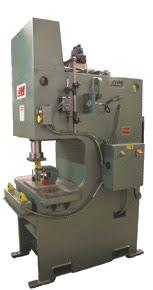
• Pump, motor, valve and reservoir are all easily accessible for maintenance.
• Large rectangular tubes used at base of machine to give safe, instant portability.
objects to the Internet. But beyond that, as soon as you move beyond those simple connectivity to more functionality, you immediately get to automation. That's really an application sitting on top, but you can have that functionality sitting at the edge. Like a nest thermostat, like your smart refrigerator or your smart lighting.
Lots of automation capabilities now become possible with more advanced Internet of Things infrastructure when we start putting the applications on top of it. a utomation is really what most people equate with IoT. So the industrial IoT now isn't so much the barcode and the passive low functionality r FID tags. It's the smarter active IoT devices, which we used to call embedded computing. We now have embedded computing that allows for more automation.
TB: right.
DE: Industrial IoT is embedded computing that is connecting up the information associated with your various machines up to the cloud. In the cloud we can now take all that information, take that data and mine it so that we can find potential vibration issues or quality control issues long before that would typically show up. We can have that repairman show up at your house and say I'm here to repair your refrigerator, and even though you didn’t call refrigerator repair, your refrigerator called.
TB: So the whole whole predictive maintenance or predictive diagnostics driven by the IoT communication combined with what you called your data science application, to let the refrigerator have its own voice, right?
DE: Yes, that's really a great benefit of having IoT in the home and IoT in manufacturing. Think about your cN c machines today. You're going to program it on a P c , usually. You're going to then upload that into the machine itself, which will then execute it after you've set it up so that it can start the process. a ll that's automated. So you got auto-milling, you got auto-cutting, all kinds of things that you can have with automation. a nd all you've done is told the machine what to do. That's really a phenomenal step and you can have that in your home shop. You don't just have to be a big industry guy. You can do the same thing with additive manufacturing and 3D printing.
You can have a small 3D printer in your house. You can buy these commercially for a couple hundred dollars and manufacture parts on demand. You don't have to stamp them out. They're not as cheap as a single instance of a part that was stamped out thousands of times. The cost of the die and equipment gets very, very expensive and typically you only make money after you make several thousands or millions of them from stamping. With the 3D printer, now you can say “Okay I need something that looks like this and I need three of them.” Each one is going to cost you not the pennies per but
22 | IMD March 2023
HYDRAULIC MACHINES OF IOWA A Division of Betenbender Mfg. Inc Phone: 319.435.2378 | Fax: 319.435.2262 www.betenbender.com
WE CAN BUILD A CUSTOM MACHINE FOR YOU!
maybe it's tens of pennies per, but you only have to make three instead of three million.
That’s less capital and is much faster. You don't have to go get dies or other capital items. Now you can start designing these things. You have this just-in-time manufacturing, just-in-time capability to get parts for whatever it is you need, as long as you've got the proper form for the file that allows you to print it out. For just-in-time manufacturing or just-in-time repair, instead of stockpiling thousands of parts, you stockpile enough material, and a 3D printer that can print those parts when you need them. a utomotive knows this and most of what you have on a tractor or vehicle can be 3D printed.

This is part of that Internet of Things aspect where you are digitizing and creating true automation. My vehicle knows something's wrong with it and sends a message. We diagnose it as we think this part is being worn. If that's a printable part, we can send off to have that part printed and have it ready before the part fails in the field, then schedule maintenance and get it repaired and replaced.
TB: So through IoT every item has a “voice.” Pair that with an automated analytic comparative for that specific part, and you have an active feedback loop that can be monitored. a nd everything has been digitized.
DE: correct. and that feeds directly into having your digital twins, that feeds directly into having your smart things. Just because you have something that's smart, doesn't
mean it has to be like a human where the intelligence is in the thing. Most Internet of things devices are smart not because the intelligence is in the device itself, but it's smart because of what's happening up in the cloud with that data. This also gets back to that cybersecurity issue and that privacy issue with all of that data.
That's the big danger of having all this data. We recognized this danger very early on at MIT. It continues to be an active area of research that I work on. h ow do you secure the data and the infrastructure? a nd this is really what cybersecurity for me is all about. It's not just “ h ey make sure that you use the right tools,” although I consult with certain companies on cybersecurity and cybersecurity companies themselves about how to make sure they address many of these things.
Previously, data was just something you had. Google understood this. Marketing companies have understood this for decades since they were founded. Most people and companies are just starting to come to realize that data is the crown jewel. really, it's the crown jewel for just about every company on the planet. Because with that data, you can do predictive maintenance, you can do predictive customer wants. You can figure out ways to upsell your customers, market to new customers, improve your revenue, decrease your costs, all kinds of things.
TB: h ow do we extend that discussion to industry and the data that's being captured? I guess you could say we have to protect the idea that I'm making this unit of one
INDUST rI a L MACHINERY DIGEST cOM IMD | 23





24 | IMD March 2023 www.IndustrialMachineryDigest.com SERVING AMERICAN MANUFACTURERS FOR OVER 37 YEARS THAT FEELING YOU GET WHEN YOU READ AND YOU’RE IN THE KNOW! SUBSCRIBE AND STAY INFORMED North America’s Manufacturing Resource for Industry Professionals Since 1986
for that individual consumer, or the intellectual property contained in the design being sent to the cN c machine or the 3D printer. What other kinds of corporate impact do you see in industry, from the cybersecurity agenda, that's being elevated everywhere?
DE: I think you just hit on the IoT, the main topics where the big one is, of course, data is the big change. It's a big game changer. So how do you protect it? That's the biggest, absolute biggest change. You have to protect that data. It's not just don't use it for nefarious purposes. It's keeping other people from accessing it. So that's one aspect of cyber security.
The other aspect because everything is going digital, everything's getting networked, is if you assume that your firewall is going to work you need to make other assumptions. You have to have defense in depth. More than likely the IoT device that you've installed to monitor your machines or otherwise help control them and in your machine on the manufacturing floor is not very secure, if it's got any security on it at all. In fact, a lot of these have zero security. You need to protect that and need to understand that you have to protect that. You can architect your network so that it's isolated, or not connected to the Internet directly. You can make sure that you've got a lot of extra rules and limitations but you need to get over this trust but verify and go to a verify and continually verify security approach.
In my past experiences, I've been able to see lots of interesting things happening on networks. a nd these are interesting things that you say, “Oh well, why would that be interesting? You just have this piece of the company talking to this piece of the company.” It's like, “Yeah, but this piece of the company should not be talking to this piece of the company.” a nd if they do talk, it needs to be a particular conversation. a nd it's not sending customer data from one to the other. Why is this piece of the company getting that customer data? Probably because that piece of the company has been compromised and it's being externally traded out of that piece of the company in some way. We've got to see that all the time. You can't just say put my firewalls on the outside and I'm good on the inside.
No, everything that you have in your network and on your network, particularly because it's a Bring-Your-OwnDevice world, is a potential access point for the bad guys. Sometimes we do this to ourselves. So, data exfiltration is a huge problem. One way that data exfiltration happens accidentally is that somebody will set up a cloud service, a cloud database, because they needed to share something with some other group for the purposes of a business deal or project. They load a bunch of data up there. It's not secured. It's shadow IT. Nobody knows about it. It doesn't get registered anywhere. They forget to shut it down or they forget to secure it and suddenly they get this big data leak. humans will do whatever is the easiest thing for them to do. So you need to make security easy for them.
Just like we have made passwords. So when I was in college, you know, this was the early days of computing and you could hack stuff more easily and you would get a thousand or billion different attempts at guessing passwords before things shut you out. You just sit there and run a password cracker on the administrator account just because you want to give yourself more privileges.
You can't do that today because of all these requirements for how your password should look, rather onerous. Nobody ever remembers their passwords today. You use a password manager. So the more we move to things that automate security, like single sign-on, password managers, and two-factor authentication, the better we will be.
We can do that with machines as well. as we start doing more and more of that two-factor authentication, continual authentication, automated security, we are able to stop things. Suppose I set up a database so you and I can work together. Oh wait, the network won't let me do anything with something because it's not authorized. I can't connect to it therefore it's not part of my network. I need IT involved. So that's how you really stop a lot of these human issues.
Password manager, single sign-on are just two examples of things that we have done right and need to do more of. If we move to that approach where we verify before we trust, and that's really what single sign-on and password protections are for, verify before you trust, and when you don't trust and continually verify, you end up with much stronger security. It is unfortunately not a concept that a lot of security people understand or fathom or agree with - old school is not always the best.
TB: What is on the horizon that everyone concerned with the Internet of Things needs to have on the radar today or needs to start investigating today? What technologies are out there that are going to be rolling down the pipe that you can discuss?
DE: a s an example consider rFID versus other technologies which may have been superior in different aspects, like Surface acoustic Wave (SaW), rFID has won the mainstream battle because traditional silicon based rFID technologies have improved. It is standardization, just good enough, and then that evolution of capabilities, improvements in designs, adding more functionality to capture an ever increasing set of possible applications with one set of technologies. We've seen this before and we'll see it again. We talked about computers, mainframes to workstations to desktops to laptops to phones to IoT. at every step of that evolution, we moved to the next one because the functionality of the current one has achieved such a level that it can support that next level layer. That next layer has a level of capability that can support usable functionality. That's really where we're at now. We're sitting in that evolution phase. 10 years ago, I would have said we're going to have active communications for passive tags and vibration sensing and just energy scavenging.
INDUST rI a L MACHINERY DIGEST cOM IMD | 25
That technology exists as capable and possible today. Nobody does it. If they do it, it's all very niche applications. It's not to say it will not happen.

TB: right.
DE: When do we reach the point where I need a very small piece of silicon that has everything integrated into it and I can drop it in and I can communicate with it at three meters, and it gives me at least an ID and maybe some other information and it's secure? We can do that today but it's probably at least another decade before we get to a tipping point where we actually do that.
TB: and cross the chasm to mainstream, right?
DE: Exactly. Because you need to get over what everybody else is doing today. Part of it is just what is everybody else doing? One of the reasons SaW failed is that it was great in areas that nobody cared about at the time. Now, it's becoming more and more relevant but it's no longer here. So we've taken the existing technology, the passive UhF technology for example, we've added more functionality to it and more security to it. We've been able to improve its range, keeping its cost about the same, maybe even dropping the cost a little bit and that has expanded the range of possible applications that can use it. You say “Well, but who needs all this security when you really only need an identifier for retail products?” Yes, you only need
an identifier for retail products, but you add all this other functionality and now it can go on all these other more commercial products.
TB: On a pallet in the warehouse for instance?
DE: Exactly. You add a bigger antenna and integrate it in, you get longer range, etc, etc. That's all from one silicon design, maybe one or two tag designs integrated in, you get economies of scale, it's cheaper and it works. It's good enough. Whereas I take that single piece of silicon, today it's still a niche capability. There's not many people that know how to do that. There's a small number of silicon designers that can do that. The technology doesn't quite give you three meters, it definitely gives you one to maybe one and a half meters today. But if you iterate on that enough, you can get to that three meter and beyond capabilities still from a grain of sand. You can start integrating in the security functionality and everything else that you want. But now you have this grain of sand instead of a tag which has an antenna, large footprint by comparison and integration problems. With a single piece of silicon a lot of those issues go away.
That's really one piece. So there's those types of technologies that are in the lab that just can't get enough momentum in the marketplace, that even though they clearly will provide a lot of benefit the incumbents do a good enough job and these competitors don't have enough value-add to be able to overcome
26 | IMD March 2023
the competitive advantage of what everybody else is already doing.
I think that active battery powered tags are really where a lot of the innovation is happening because everybody wants to go to the cell phone today. It's because the cell phone is the computing device. We were talking about this before, mobile computing.
Why is mobile computing so big? It's because it is the computer for a lot of people. If you go to a Third World place, like Brazil, most people can't afford a computer but they have a smartphone. It may be a low-end smartphone but it's a smartphone. More and more in the US, regardless of your income level, you have a smartphone. That is your gateway to the Internet, that is your computing device. You do everything on that computing device which enables more interaction with the world around us, that whole smart cities thing.
Now, in a chemical plant, you can be using something like Wireless heart, which is a fairly secure industrial grade ad hoc networking system protocol and systems that are used for it. It works great, but your cell phone doesn't talk that language.
In the smart city, you need to have the devices talking to smartphones. So that means you're going to use Bluetooth Low Energy (BLE). That means you're going to have NFc (Near Field communication (NFc) is a set of short-range wireless technologies, typically requiring a distance of 4cm or less to initiate a connection. NFc allows you to share small payloads of data between an NFc tag and a smartphone). That means you have something visual like a Qr code. all of that feeds back into your cell phone. So that's why we're seeing some of this bifurcation. Industry has slightly different protocols that they use that are not cell phone friendly. That is starting to change too because of the value of smartphones in the work environment, even in the manufacturing environment, and the costs associated with something like a Wireless heart versus a BLE. Wireless heart is more expensive usually, by a lot. BLE, providing the same functionality, not necessarily the same ruggedness that you might get from a Wireless heart device, but will last almost as long and overall cost of ownerships going to be less because they're a lot cheaper. It's three or four to one last time I checked. It's cheaper to use the BLE, making it friendly to your repairman, your workers, particularly if it's a remote location. I don't need to bring something special, just my cell phone.
I can talk with NFc, Qr code, Bluetooth to all the devices in the remote facility and I just need my cell phone. We're definitely seeing a move towards those types of commercial products with clear winners. It's whoever can talk to the cell phone. I'm starting to see that on the industrial side as well where it's traditionally been more customized or targeted protocols and devices for the industrial setting. We are still always going to have those. But that is definitely changing particularly from a wireless perspective.
ScaDa devices are really an interesting mix. a lot of ScaDa devices out there are 30, 40, 50 years old. Most
ScaDa is in industrial plants - chemical plants as well as power plants and water maintenance. If you've got ScaDa devices working, generally the approach is they work. Let them be. Don't screw up what works. Just maintain it, manage it. With IoT we put all these things on the Internet. Those data devices were not designed for the Internet and a lot of them are being put on the Internet through a Windows XP box.
hopefully that's starting to change as people have realized cybersecurity is important. But now you have all these legacy systems that need to be secured. how do you secure those? There are products on the market and ways to do that. But it costs money.
TB: IoT means you secure your data because everything's going to be talking. Everything's going to have a voice and you never know when there will be some information that provides a tip to someone or provides a competitive advantage out there that you didn't mean to be in the unsecured domain. Even intellectual property I suppose for manufacturing processes.
DE: Yep. That's a great summary.
TB: It's a great wrap right there. Daniel, thank you so much for taking time to talk with us.
• Provide reliable, low cost, ink code marking.

• May be mounted in any orientation.
• The sealed ink system allows discontinuous operations with immediate start-up of comparable previous impressions.

• Can be modified or made to order for your particular marking application.

INDUST rI a L MACHINERY DIGEST cOM IMD | 27
RUGGED. RELIABLE. OPERATOR-FRIENDLY. LOW OPERATING COST. SPRINTER MACHINES…
Model 22
740-453-1000 | SALES@SPRINTERMARKING.COM SPRINTERMARKING.COM INDUSTRIAL INK–CODE
Pass/Fail Dot Marking Machine
MARKING SYSTEMS
Preventing Workplace Injuries in Load Handling
Lifting injuries are a common occurrence in logistics and load handling, where workers are required to move heavy loads throughout their workday. These injuries can range from minor sprains and strains to more serious conditions such as herniated discs or chronic back pain. While these injuries may seem minor, they can have a significant impact on the health and well-being of the workforce, as well as the overhead costs of a business. according to the National Safety council, preventable work-related injuries and fatalities cost US businesses $170.8
billion in 2018. Furthermore, the Bureau of Labor Statistics reported that there were 2.8 million nonfatal workplace injuries and illnesses reported by private industry employers in 2019, with overexertion and bodily reaction accounting for 33% of those cases. It is crucial for businesses to prioritize safety in logistics and load handling to prevent such injuries and the associated costs.
To prevent lifting injuries, it is essential to follow proper lifting techniques. Workers should lift with their legs and keep the load close to their body to avoid putting undue
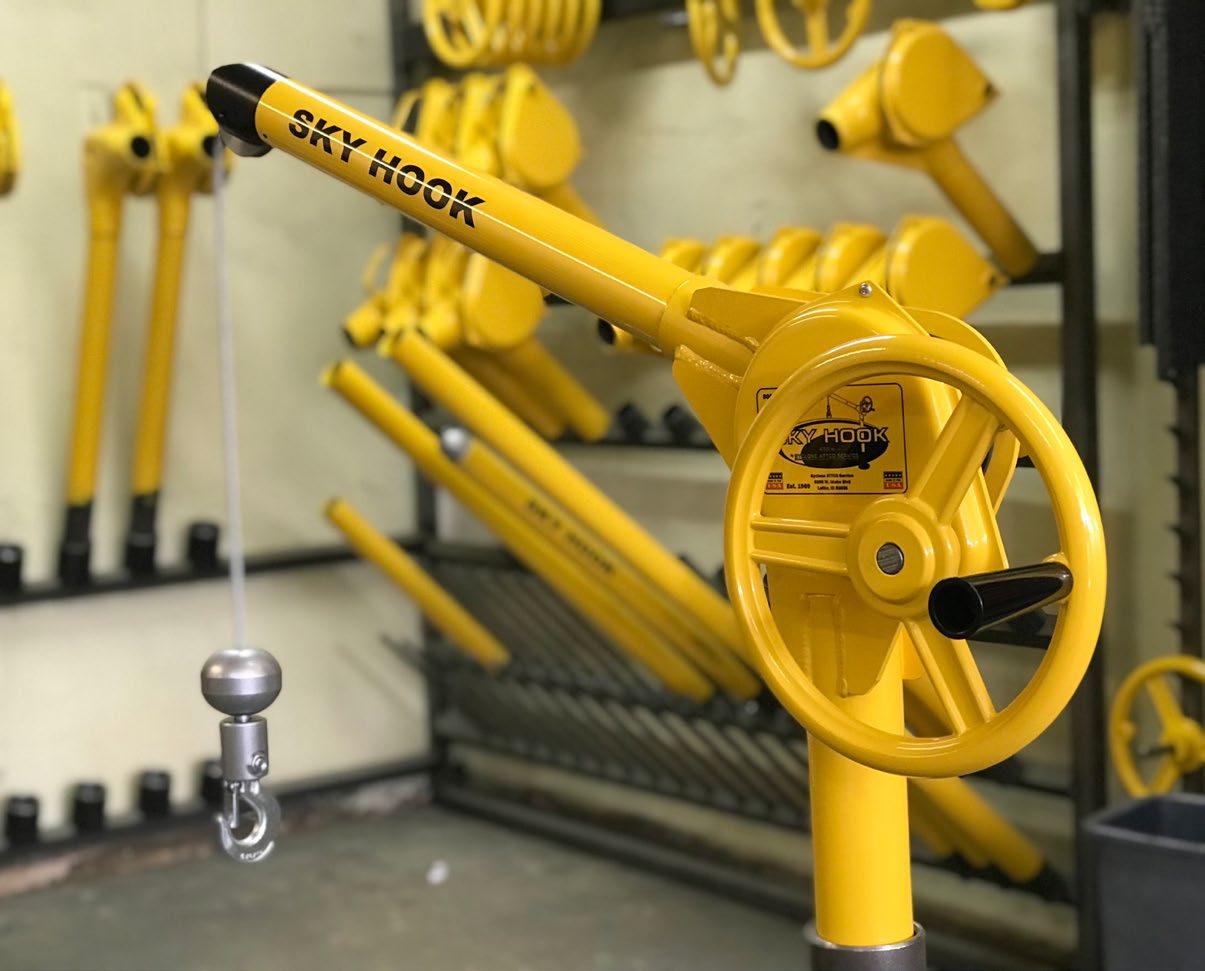
28 | IMD March 2023 safe T y & MainTenanCe
stress on their backs. They should also avoid twisting their bodies while lifting or carrying the load.

Employers can also provide manual lifting devices to prevent injuries. The Sky industrial lifting equipment provides a solution for lifting requirements in logistics and load handling. With many companies restricting individual lift limitations to 35 lbs., the Sky hook provides small, ergonomic, mechanical lifting devices for heavy objects that are portable and easy to use. The device can safely and efficiently lift up to 500 lbs. with a simple one-hand operation, saving time and money while preventing lifting injuries. It is manually operated and requires no connection to outside power sources.

Providing regular training and education for workers on proper lifting techniques and the use of manual lifting devices is also crucial. This training should include information on the weight limits of each device, how to



properly position the load, and how to safely maneuver it to avoid injuries.



Businesses that prioritize safety can benefit from reduced costs associated with workplace injuries. according , for every dollar invested in safety and health, businesses can expect to see a return of between $2 and $6. Furthermore, safe workplaces can improve employee morale and engagement, leading to increased productivity and decreased turnover. By investing in workplace safety, businesses can also comply with legal requirements and avoid penalties for
Preventing workplace injuries is crucial for businesses in logistics and load handling. By following proper safety guidelines, providing manual lifting devices, offering regular training and education, and prioritizing safety in the workplace, businesses can reduce the risk of workplace injuries, improve productivity, and benefit from reduced costs associated with workplace injuries. Furthermore, businesses that prioritize safety can comply with legal requirements and avoid penalties for non-compliance while improving employee morale and engagement.

INDUST rI a L MACHINERY DIGEST cOM IMD | 29 IMD – North America’s Manufacturing Resource for Industry Professionals Since 1986 Twist & Spiral Options Available MEMBER SUPPORTER 30yrs of www.carellcorp.com • www.eaglebendingmachines.com See Us Online or Call : (251) 937-0947 Heavy Duty - Large Capacity: Plate Rolls, Angle Rolls , Pipe & Rebar Benders, Custom Machines And More! Plate Rolls
Ga
Capacities, 80 Models, CNC Options Angle Rolls 1” to 10” Capacities 30 Models, Custom Tooling CNC Options Section Bending Machines 1" to 4" Capacities, 15 Models, CNC Options
20
to 6”
Amp Up Packaging Productivity with Robots
By: Chris Caldwell, Product Manager at Yaskawa America Inc. – Motoman Robotics Division
The degree of complexity in consumer requirements is higher than ever. Paired with the booming domain of digital e-commerce amidst on-going supply chain disruption and skilled-labor shortages, businesses are faced with unprecedented challenges. Savvy business leaders are implementing a variety of Industry 4.0 technologies to create smart manufacturing and fulfillment environments that solve some of the fluid factory workflow, product assembly, and packaging production challenges that exist in today's environment.
Safe, reliable and efficient, the combined use of highly flexible robots with intelligent peripherals is a huge game-changer for these companies looking to maintain high quality standards and consistent product throughput for optimal customer satisfaction.

Task-specific Robotic Automation robot suppliers and integrators continue to innovate robust material handling solutions that can easily mesh with existing equipment, and facilitate the goods to consumer process. From fast, agile and compact robots for primary and secondary requirements, to higher payload extended-reach models for end-of-line tasks, many solutions can be designed to work safely with or alongside humans to create a more resilient workforce. complete turnkey robotic solutions are also helping businesses adapt for greater competitive edge.
Expected to represent 30 percent of capital spending in the next five years, robotic usage for the logistics and fulfillment of retail and consumer goods will continue to grow, accounting for the highest share among industrial segments,
according to a 2022 study by McKinsey & company entitled “Unlocking the Industrial Potential of robotics and automation.” With the bulk of heavy investment focused on dedicated solutions for picking, packing and palletizing, many robotic solutions are currently centered on the following material handling tasks:
High-Speed Parcel Induction
Often a bottleneck for production environments, the manual identification of boxes, envelopes and polybags (often from a conveyor) for sorting or further diverting to a specific destination is tedious work that opens the door to worker injury and processing inaccuracy. To prevent this situation and stay competitive, business leaders are modernizing the parcel sortation process and implementing extremely flexible solutions that are easily integrated with a wide range of traditional equipment.
Especially advantageous for small parcel fulfillment, high-speed and space-efficient induction workcells are being used to address capacity shortages for increased efficiency. Engineered with a blend of artificial intelligence (aI) software, robust machine vision, flexible gripper technology and more, these smart systems accurately identify items and determine how to handle them.
Not only does this intelligent technology enable high-performance robots with adaptive motion control to identify, track and pick each item at the precise speed and grip required regardless of weight, size and orientation, but also, it facilitates the meticulous maneuvering of items for rapid sortation or singulation for downstream processing. Depending on application requirements, robot pick rates range from 1,000-2,000 picks per hour (PPh), creating dynamic yet error-proof product flow. Multiple workcells or multi-robot cells also
30 | IMD March 2023
ManUfaCTURinG sHowCase
Scalable robotic automation with intuitive tools enables companies to navigate the path to greater operational efficiency. Image provided courtesy of Ambi Robotics.
enable robots to work collaboratively along the same fulfillment line for maximum throughput.
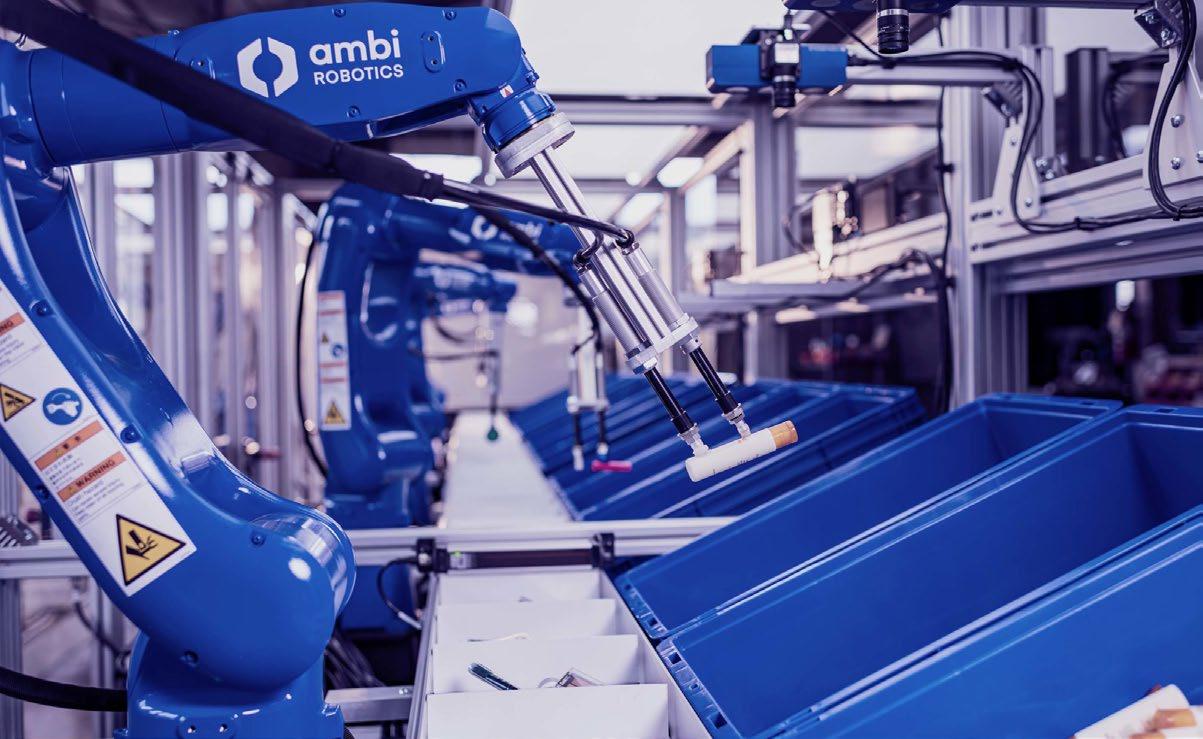
High-Mix Kitting
another labor-intensive task prone to worker injury and fulfillment inaccuracy is kitting – the act of picking an item from a supply tote and bundling it with other multiple product stock-keeping units (SKUs) into a single box, bin or bag. From monthly subscription boxes and meal packs to medical kits and more, this fast-growing application of robotic automation facilitates the rapid building of unique kits for emerging high-growth brands.
Like induction, modern a I and deep learning platforms enable robots with optimized end-of-arm tooling (EOaT) to easily adapt and handle a large range of ever-changing items. By combining advances in artificial intelligence and simulation with modular hardware configurations, leading solution suppliers can build highly dexterous solutions that scale as operations grow. The learning data generated from the simulation process effectively teaches a robot which path and points it can realistically and stably accommodate.
configurable robotic solutions refined using advanced operating systems that leverage simulation-to-reality (Sim2real) technology or unique 3D perception systems enable quick implementation of a robot system for
accelerated uptime. Match this with the ability to pick and sort approximately 60 items per minute with 99 percent accuracy and return on investment is often quickly realized.
Flexible Case Packing
To gain efficiencies and drive leaner operations, robots are being used more frequently for high-volume case packing, where goods from a conveyor or sorter are picked then packed inside a larger carton for shipment or storage. Similarly, the uptick in the variety of case sizes, styles and counts, as well as the usage of retail-ready and reusable packaging, is met head-on via fast, flexible robotic automation.
Whether a single robot with quick-change EOaT is integrated into an existing line, or a complete packing solution with high robot density is installed on the production floor, robotic automation completes this highly repetitive job quickly and accurately with less labor for noticeable cost savings. Depending on application requirements, robots can load products vertically or horizontally – another benefit of these extremely versatile machines. Other tasks, including case erecting and case sealing, are also viable applications being addressed by robots.
To successfully identify objects and properly position them with the utmost speed and precision, the same form
INDUST rI a L MACHINERY DIGEST cOM IMD | 31
IMD – North America’s Manufacturing Resource for Industry Professionals Since 1986
By implementing a configurable, AI-powered robotic kitting solution, businesses can relieve employees of a labor-intensive task that is prone to causing injuries. Image provided courtesy of Ambi Robotics.
of aI-driven or 3D perception technology used in parcel sortation and kitting can be applied. a s with the other applications, case packing typically realizes the same transformative results for throughput and quality.
Mixed-Case Palletizing
a tertiary stage of order fulfillment, robotic palletizing continues to be a rapidly growing area for robot implementation – much in part to its ease of integration and ability to optimize worker safety, order accuracy, product quality and throughput capacity. This is especially true for mixed-case palletizing.
While the palletizing of homogeneous layers of any single SKU is quite common in traditional palletizing applications – where no robotic vision is used and offline programming software helps create pallet patterns for virtually any mix of SKUs – manufacturers and distributors are turning to mixed-case palletizing for a more intelligent and flexible approach to handling demand-driven loads. able to handle and stack multiple SKUs within a layer –where dissimilar packages such as boxes, bottles, bags and more are used – mixed-case palletizing is made possible through enhancements in machine vision, deep learning and aI with software intelligence. Product characteristics drive the pallet build algorithms that correlate data, such as sequence and orientation of packages in relation to the robot and gripper coordinates. Extremely perceptive, the software helps place large, heavy products on the bottom of pallets, while small, lightweight objects are positioned on top of loads. In short, user-friendly software creates more flexible palletizing systems for adapting to dynamic industry change. handling and shipping costs, including carrying costs per SKU, are also typically lowered.
Truck Loading and Unloading
Whether for delivery or facility-to-facility distribution, truck loading and unloading thrives on organization. Once a chaotic process, the transfer of packages to and from a vehicle (or vice versa) is easily achieved with the appropriate robot and peripheral tools.
a long-reach robot capable of reaching the entire volume inside the truck to retrieve or place packages is ideal. Proper end-of-arm tooling (EOaT), a capable vision and processing system, as well as a suitable conveyor system can quickly, accurately and ergonomically handle packages. highly important to facilitating the loading and unloading process, robotic automation’s ability to stack sorted packages in an organized Tetris-style manner for transport is a competitive edge game-changer.

Greater Operational Resiliency
The shift from mostly manual operations toward smart robotic automation solutions, such as the ones discussed, can provide transformative benefits for productivity gains. add in the use of motion control platforms or Programmable Logic controller (PLc) solutions that provide a standard programming environment for easy robot setup,
and companies are better positioned to navigate production struggles for supply chain fluidity. The use of enterprise resource planning (ErP) or integrated asset management solutions – that support multiple brand devices and collect information in real time for data-driven optimized planning – are also helping to unify critical business functions for long-term success.
While no single robot or robotic system is a one-sizefits-all solution, implementing one can enhance process speed and production reliability – something that many operations are currently seeking. To discover how robotic automation can shore-up your end-to-end packaging operations, reach out to a local robot supplier or integrator.
Compact, complete turnkey robotic solutions that can be easily implemented are helping companies adapt for greater competitive edge.
32 | IMD March 2023








The Best Tool Cabinet You Will Ever Buy GUARANTEED 100%MADE IN THE USA INEVERY WAY WWW.STORLOC.COM • 1-800-STORLOC 1-800-786-7562 MADE BY AMERICAN CRAFTSMEN IN THE USA sales@storloc.com
Don’t MES with SCADA or MOM will be Upset!
Maximizing automation benefits through software
The manufacturing industry is going through a digital transformation to keep up with the evolving market demands. The increasing demand for custom products, shorter delivery times, and the need for greater flexibility in manufacturing processes has led to the adoption of automation technologies. To make the most of these technologies, manufacturers need to leverage software components like Manufacturing Operations Management (MOM) and Supervisory control and Data acquisition (ScaDa) systems.
ScaDa is a control system designed to collect data from industrial equipment. The acronym stands for Supervisory control and Data acquisition. It is generally viewed as an architecture combining multiple pieces of software that gather real-time operational (OT) data from sensors monitoring motors, pumps, valves, with multiple hardware collection points such as rTUs (remote terminal units) or PLcs (programmable logic controllers). ScaDa aggregates the data to an on-premise server or a remote data server, and enables organizations to use the data for making and deploying data-driven decisions regarding their industrial processes. With ScaDa organizations can monitor sites locally or remotely. ScaDa includes human Machine Interface.
MOM, on the other hand, is a broader term that encompasses various software components used in the manufacturing industry to manage and optimize production processes. These components include Manufacturing Execution Software (MES), which is responsible for controlling the order flow between work centers, and Enterprise resource Planning (ErP) software, which manages resources, orders, and releases.
The integration of ScaDa and MOM systems, along with other software components, is critical for maximizing the benefits of automation through software in the manufacturing industry. The integration requires coordination and collaboration among different teams within the organization, as well as the implementation of an

MES system that can automate and optimize manufacturing processes. By leveraging the benefits of automation through software, organizations can reduce the risk of human error, improve efficiency, and increase productivity, making them more competitive in an ever-changing global marketplace.
To implement an integrated system for ScaDa and MOM, manufacturers often rely on software providers that specialize in automation and data management. These providers offer software solutions that enable organizations to collect and process data from various sources and use it to optimize their manufacturing processes. Some of the key software providers in this space include rockwell automation, Siemens, aBB, Wonderware, and GE Digital.
Manufacturers can also benefit from leveraging MES and ErP software to improve their operations. Examples of MES and ErP software providers include SaP, Oracle, Plex Systems, IQMS, and Epicor. By partnering with a reputable software provider, manufacturers can leverage the latest technologies and tools to improve their operations and remain competitive in an ever-changing global marketplace.
One of the key benefits of an MES system is its ability to collect and analyze data from various sources, including ScaDa and other software components. This data can be used to improve production processes by identifying areas of inefficiency and optimizing workflows. For example, if an organization identifies a bottleneck in their production line, an MES system can help them identify the cause of the bottleneck and provide data-driven insights to optimize the process and reduce the bottleneck.
34 | IMD March 2023
inDUs TRial aUToMaTion
another critical aspect of maximizing automation benefits through software is the ability to provide real-time data and analytics to decision-makers. This enables organizations to make data-driven decisions that improve their overall performance. For example, an organization can use real-time data from ScaDa systems to identify equipment that requires maintenance or replacement. This helps them reduce downtime, improve equipment efficiency, and increase overall productivity.
In conclusion, software providers play a critical role in helping manufacturers maximize the benefits of automation through software. They offer a range of solutions for ScaDa and MOM, along with other software components, that enable organizations to collect, process, and analyze data from various sources and use it to optimize their manufacturing processes. By partnering with a reputable software provider, manufacturers can leverage the latest technologies and tools to improve their operations
ISA-95 Framework
ISa-95 incorporates the layers model of technology and business process for manufacturing enterprises as levels for the standard. These levels are:
» Level 0 - Defines the actual physical processes and generally is microseconds or milliseconds or smaller depending on the process being measured.

» Level 1 - Defines the activities involved in sensing and manipulating the physical processes. These are generally measured in terms of seconds.

» Level 2 - Defines the activities of monitoring and controlling the physical processes. Typically can be measured in terms of hours and minutes.
» Level 3 - Defines the activities of workflow to produce the desired end products. Typically can be measured in terms of days or hours.
» Level 4 - Defines the business-related activities needed to manage a manufacturing operation. Typically can be measured in terms for weeks or months.
Manufacturing Operations Management systems reside in Level 3 of the model. From a component or software perspective, Levels 1 to 4 can be seen like this:
» Level 1: Intelligent devices such as an Industrial IoT device
» Level 2: control systems (e.g., Programmable Logic controllers, Distributed control Systems, ScaDa)
» Level 3: Manufacturing operations systems (e.g., MES)
» Level 4: Business planning and logistics systems (e.g., ErP)
For more information go to www.isa.org
INDUST rI a L MACHINERY DIGEST cOM IMD | 35
www.trimlok.com info@trimlok.com Trim-Lok Corporate 6855 Hermosa Circle Buena Park, CA 90620 Trim-Lok Midwest 5540 Beck Drive Elkhart, IN 46516 CELE B R ATING YEARS CELE B R ATING 80 0 - 663-9507 CALL US TODAY! ® TRIMS AND SEALS S C M Y CM MY CY CMY K 2022 IMD AD final 11-21-2.pdf 1 11/22/22 12:16 AM TrimLok-HH-2023.indd 1 1/22/23 4:18 PM IMD – North America’s Manufacturing Resource for Industry Professionals Since 1986
Forecasting CHIPS for Chips
By: Trey Bell
In January of 2021, congress passed the creating helpful Incentives to Produce Semiconductors (chIPS) for america act. This legislation, enacted as part of the National Defense authorization act (NDaa) for Fiscal Year 2021, authorized a series of programs to promote the research, development, and fabrication of semiconductors within the United States. 17 months later, the bipartisan chIPS and Science act of 2022 was signed into law. Specifically, in the publicly released fact sheet which outlines the law, the purpose of the chIPS and Science act is to strengthen american manufacturing, supply chains, and national security, and invest in research and development, science and technology, and the workforce of the future to keep the United States the leader in the industries of tomorrow, including nanotechnology, clean energy, quantum computing, and artificial intelligence. The chIPS and Science act makes the smart investments so that americans can compete in and win the future.

Since the 1990s, when the term “fabless” was the rage, the center of semiconductor production has been a sia. contract fabricators such as Taiwan Semiconductor Manufacturing corp (TSMc) have been building the chips that drive the rapidly expanding electronic content in
all of today’s products. While the semiconductor was invented in the United States, where once as much of 40% of the world’s semiconductor production occurred, the global semiconductor production contribution has diminished to less than 12%. creating capacity to capture the next wave of market share won’t happen overnight because the advanced fabrication process knowledge gained from shrinking geometries, new power consumption approaches, programmable logic and systems requirements, let alone the advancements in substrate technology are just not transferable over Zoom, cloud storage being shared, or resource recruitment. It is going to require a longer term commitment and plan to expand the full ecosystem of a semiconductor within each greenfield development - from the construction of the fabrication facility, to the design and build of advanced testing equipment, to the manufacturing of the advanced parts required on the testing equipment (See IMD’s article in February 2023 that highlights how 3D Systems a pplication Innovation Group achieves these advances with semiconductor companies, “Driving additive Manufacturing Benefits”) to the packaging and assembly equipment, to the operators and clean room requirements,
36 | IMD March 2023 woRkfoRCe De VeloPMenT
to the computing infrastructure which creates the software that is loaded on the semiconductor.
In 2022, semiconductor sales worldwide were $580 billion. according to IBIS World’s website, the United States’ semiconductor and circuit manufacturing industry in 2022 represented approximately $64.5 billion. Further it is expected to contract to $61.5 billion in 2023. The competition for global market share is only going to increase. The EU has an ambitious goal of producing 20% of the world's semiconductors by 2030. The European commission announced a plan, called the EU chips act, in 2022 that anticipates around €43 billion going toward the semiconductor industry on the continent, including research and production.
Similarly, china's domestic semiconductor industry received another boost in January 2022, when the State council published the 14th Five Year Plan on the Digital Economy to enhance basic research capabilities in strategic sectors, improve self-sufficiency, and strengthen supply chain security in key industries. Technology is a core focus of the plan, with several chapters dedicated to describing how china’s leaders hope to transform the country into an innovation powerhouse. The semiconductor industry— particularly the integrated circuits (Ic) industry—is a core component of this effort. Under the plan, as first reported by reuters, china will invest 1trn Yuan, or some $143bn, in its chip industry over a five-year period with a focus on advanced manufacturing
The chIPS and Science act directs $280 billion in spending over the next ten years. The majority—$200 billion—is for STEM, r&D, and workforce and economic development. Those funds are being authorized through the National Science Foundation, US Department of Energy, and US Department of commerce. around $52 billion is for semiconductor manufacturing, r&D, and workforce development, with another $24 billion worth of tax credits for chIPS advanced manufacturing programs. There is $3 billion slated for programs aimed at leading-edge technology and wireless supply chains.
Specifically, The U.S. Department of commerce has been tasked to oversee the $50 billion chIPS for america Fund. This provides $39 billion in appropriated funds for a semiconductor manufacturing incentives program over 5 years and $11 billion in appropriated funds over 5 years for r&D and workforce measures. These measures complement the Treasury's 25% semiconductor manufacturing investment tax credit which has an estimated cost of $24 billion.
Industry 4.0 is driven in part by the Internet of Things - and the ubiquitous expansion of the “edge” of computing. It is possible for every item to have a voice in IoT. a s we think about the IoT as being the infrastructure that connects these items or products or devices, we must also think about the “edge” functionality and how its increasing demand will continue to drive more electronics and semiconductor content. Both the number and type of connections are growing exponentially, as well as the number and types of devices.
The chIPS and Science act is a good start, and there are several ways your business may benefit from investments in advanced manufacturing and Industry 4.0 workforce development. In early February, the Department of commerce released this information through the National Institute of Standards and Technology, entitled “chips Incentives” and accessible at www.nist.gov/ news-events/news/2023/02/news-chips-incentives-and-rd
CHIPS Incentives
Later this month, the Department of commerce plans to announce more details regarding funding opportunities and application processes.
» In late February, the Department plans to release a Notice of Funding Opportunity for commercial leading-edge, current, and mature node fabrication facilities. This includes both “front-end” semiconductor manufacturers and “back-end” packaging facilities.
» In late spring, the Department plans to release another funding announcement focused on material suppliers and equipment manufacturers.
» In early fall, the Department plans to announce a funding opportunity to support the construction of semiconductor r&D facilities that will further strengthen the U.S. semiconductor manufacturing ecosystem.
» These announcements will contain detailed guidance, processes, and timelines for organizations to apply for chIPS incentives.

INDUST rI a L MACHINERY DIGEST cOM IMD | 37 IMD – North America’s Manufacturing Resource for Industry Professionals Since 1986
The U.S. must move quickly to build out both leading-edge facilities and the current and mature node facilities that are critical to our economic and national security. While the first funding opportunity is directed toward chipmakers, we know the broader semiconductor supply chain and r&D efforts are essential to creating a competitive ecosystem for semiconductor manufacturing.
Once the first funding opportunity is announced, everyone will be encouraged to provide their feedback. The Department of commerce will offer all companies in the semiconductor supply chain the chance to submit a brief statement of interest. This will enable them to communicate their expected interest in chIPS funding and share their initial project visions with the department.

The National Science Foundation has an increased budget to $81 billion which has been appropriated by the chIPS and Science act. Within this amount, and formally codified into law is Technology, Innovation and Partnerships which created a directorate that authorizes $20 billion for its initiatives over FY 2023–2027. This new NSF directorate creates breakthrough technologies; meets societal and economic needs; leads to new, high-wage jobs; and empowers all americans to participate in the U.S. research and innovation enterprise. TIP is a unique opportunity that engages the nation's diverse talent in strengthening and scaling the use-inspired and translational research that will drive tomorrow's technologies and solutions. The regional Innovation Engines program (or NSF Engines), which is a piece of this directorate, supports establishment of translation accelerators and test beds, invests in workforce development and training, and invests in programs to provide entrepreneurial training. Specific objectives of the NSF Engines are to:
» advance critical technologies
» address national and societal challenges
» Foster partnerships across industry, academia, government, nonprofits, civil society, and communities of practice
» Promote and stimulate economic growth and job creation
» Spur regional innovation and talent
NSF funding and oversight will provide “fuel” to these engines. h ow industry gets engaged to prime the pump and get the engines operating at top output could be highlighted in the January 26 press release from NSF in which a cross-sector partnership with Ericsson, IBM, Intel, and Samsung to support the design of the next generation of semiconductors as part of its Future of Semiconductors (FuSe) initiative was announced. The press release goes on to say “through this partnership activity, NSF will team with Ericsson, IBM, Intel, and Samsung to invest in projects that cultivate a broad coalition of science and engineering researchers to pursue holistic, “co-design” approaches. By intentionally supporting researchers who are integrating materials, devices, architectures, systems, and applications, new semiconductor technology is designed and developed in an integrated way. co-design approaches simultaneously consider the device/system performance, manufacturability, recyclability, and impact on the environment.” In other words, it isn’t just higher institutions that can work with the NSF in partnership.
Other funds have been earmarked for commercializing innovative ideas or completing practical research within various topic areas. a s an example of one of the programs within TIP, Enabling Partnerships to Increase Innovation c apacity (EPIIc) supports the growth of inclusive innovation ecosystems through capacity-building efforts at institutions of higher education with limited research capacity — preparing these institutions to participate in NSF regional Innovation Engines at a future time. The program aims to broaden participation in innovation ecosystems that advance emerging technologies (e.g., advanced manufacturing, advanced wireless, artificial intelligence, biotechnology, quantum information science,
38 | IMD March 2023
semiconductors and microelectronics) by supporting capacity-building efforts at institutions of higher education (IhEs) interested in growing external partnerships. There are 50 awards planned, of up to $400,000 each. Dates for proposal submission are fast approaching.
What does it all mean for Industry 4.0 and the advanced manufacturing workforce? It means the United States has made a serious commitment to participate in reducing the manufacturing labor shortage that exists today, and to changing the imbalance in semiconductor trade. Businesses which have any link to the semiconductor industry must take note - and plan on a reversal of the skills scarcity and supply shortages to occur on a graduated, intentional timeline, ultimately leading to more jobs and the potential for reshoring semiconductor business. Smarter manufacturing will be the result, says Jason Bergstrom, the Go-to-Market leader for Deloitte’s Smart Manufacturing portfolio, The Smart Factory @ Wichita, and principal at Deloitte consulting LLP.
“We have seen the semiconductor shortage impact many of our clients across industries. Even if it’s not part of their product, it’s part of their equipment to manufacture the product or other pieces of their operation.

“a s a result, we see clients reevaluating the physical location of their operations as this and other shortages make the risk of locating supply far away very apparent. reshoring – or bringing back domestic production – and
nearshoring – establishing new production domestically that was once international – is on the rise in an effort to bring the supply closer to the demand. Industry players in medical technology, batteries, and semiconductors are leading the way with this trend, potentially influenced, at least in part, by government policies and investments from the U.S. in legislation such as the chIPS act. This means we’re talking to clients about greenfield/new builds for smart manufacturing facilities, starting from the ground up to create a true Industry 4.0 environment.
"The benefits of a completely new, smart operation also mean that organisations will be able to better predict parts shortages and other supply-chain related issues so that organizations can quickly pivot for less disruption to customers.” [Editor’s Note: quote first published in Manufacturing Digital].

The chips are on the table for the semiconductor ecosystem. It is up to the industry to get in the game and leverage these resources to continue the momentum towards once again setting the bar for semiconductor and electronic manufacturing. To get more information on the chIPS and Science act, and how it is setup to impact the Industry 4.0 Workforce, go to chIPS.gov. If you are considering applying to a chIPS for a merica funding opportunity, take the first step by obtaining a Sa M.gov registration and Unique Entity Identifier (UEI) number as soon as possible.
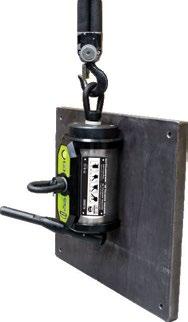
INDUST rI a L MACHINERY DIGEST cOM IMD | 39
Industrial Magnetics Inc. 1385 M-75 S, Boyne City, MI 49712 PHONE: 1.231.582.3100 magnetics.com ADVANTAGE LIFT™ MAGNETS Industrial Magnetics Inc. imi@magnetics.com Phone: 888.582.0822 Get the Advantage with » Permanent Rare Earth Lift magnet that’s built to last in heavy-duty industrial work environments » Handle locking lifting bail prevents accidental load release during lift » Handle moves laterally instead of pulling, pressing buttons or levers » Vertical lift lug adapter optional Scan Me!
Advantages of Automated Warehouse Conveyor Systems
By: Jake Rheude
Automated warehouse conveyor systems are becoming increasingly popular among warehouse owners and operators, as they offer a range of advantages that can help to protect and enhance a company’s operations. These systems can automate many manual processes in moving goods throughout a warehouse, making the process more efficient, reliable, and cost-effective.
So, what can automated conveyors bring to warehouse success?

Core advantages of conveyors
One of the main advantages of automated warehouse conveyor systems is that they can significantly increase the speed and efficiency of warehouse operations. With manual processes, goods must be moved from one location to another by hand, which can be time-consuming and labor-intensive.
automated conveyor systems, on the other hand, move goods quickly and efficiently. Engineered systems reduce the time and labor required to move goods through your warehouse and to packing stations. This can help to increase productivity and reduce labor costs, which can lead to significant savings for the company. You may leverage automated pickers as well to increase efficiency further and reduce the strain on your people.
another advantage of automated warehouse conveyor systems is that they can improve the accuracy and reliability of the warehouse operation. With manual processes, it is easy for errors to occur, such as goods being misplaced or mislabeled. Pair automated conveyor systems with scanners during transit and scanners at packing stations. This ensures that goods are tracked and moved accurately, reducing the risk of errors and improving the overall accuracy of the warehouse operation.
40 | IMD March 2023
PRoCess
automated warehouse conveyor systems can also help to protect a company’s operations by reducing the risk of injury and accidents. Manual processes, such as manual lifting and moving of heavy goods, can be physically demanding and can put workers at risk of injury. On the other hand, automated conveyor systems can reduce the need for manual labor and can help to reduce the risk of injury and accidents.
a s conveyors start performing those tasks for you, they also serve as a check against error — removing the rate of human errors and the potential for human error. The more manually intensive a process is, the greater the likelihood of an issue. The average warehouse error rate is between 1% and 3%. You can quickly get below the 1% mark by combining conveyors with standard best practices for picking and verification. You get a faster operation that is less likely to increase your fulfillment and return logistics costs.
Don’t neglect data and customization
In addition to these advantages, automated warehouse conveyor systems can also be customized and configured to meet the specific needs of a company’s warehouse operation. They can be designed to handle a wide range of goods, though most excel with lightweight items. conveyors are a smart tool to help you implement advanced techniques such as batch and wave picking
— advanced techniques directly linked to improving fulfillment speed and inventory management.
automated warehouse conveyor systems also provide real-time tracking capabilities. These enable warehouse operators to monitor the movement of goods throughout the warehouse in real-time. You can verify inventory levels, look at goods and material utilization, and spot errors as they occur. This practice also helps you determine operational bottlenecks or identify potential issues, such as equipment breakdowns or delays.

The data and customization features of conveyors, and of robotics more generally, can help your team resolve issues quickly and keep operations running smoothly.
Opportunities exist but need a personal touch
automated warehouse conveyor systems offer a range of advantages for warehouse owners and operators, including increased speed and efficiency, improved accuracy and reliability, reduced risk of injury and accidents, and customizable configurations that can meet the specific needs of a company’s warehouse operation. These systems can help to protect and enhance a company’s operations, leading to significant savings and increased productivity.
With the current state of warehouse tech, it’s the right time to consider investing in an automated conveyor system to optimize warehouse operations and improve your bottom line.
INDUST rI a L MACHINERY DIGEST cOM IMD | 41
IMD – North America’s Manufacturing Resource for Industry Professionals Since 1986
Digitalization — Next Stops On Your Journey
By: Rajas Sukthankar, Vice-President Digital Industries — Motion Control, Siemens Industry, Inc.

Simply put, we live in a digital world, both in our personal lives and on the job. In manufacturing today, challenges abound. customization, fast-changing business and technology environments, workforce utilization and talent pool concerns, plus the seemingly ever-present disruptive business climate, now combine to present manufacturers of all types and all sizes with concerns.
among the proactive players, this situation is meeting with unmatched technology advancements to drive innovation much faster and on a truly global scale. companies need to adapt their business models for sustainability and what is often called future-proofing, though that concept is another article entirely.
changing demands in the market require a rethinking about the utilization of all resources in a company. Yet, a recent study found that 86% of all companies often avoid critical projects due to legacy systems. Think about that for a minute. Moreover, 45% of companies of all sizes did not know where or how to begin the IoT process or, as we call it, the path towards digitalization. This is not some fantasy yellow brick road, it is a journey of critical importance to the survival, let alone prosperity, of a company today. Lastly, the study found that over 40% of companies say they cannot find suitable partners with whom to begin transitioning to a digital map.
at Siemens, we believe it necessary for a company to have a goal of developing an eco-system that is easy to use, flexible and open to allowing the integration of suitable partners who bring skillsets and technology to our suite of products, software and services. The same is true for your company.

In assessing your present business condition, it is critical to determine the following for your hardware and software. Is it modular? are the cloud connections and edge technology onboard your machines sufficient? Is there adequate aPI on your standard applications? are your systems open to connecting with third-party resources and specialized hardware products? can you, using on-staff personnel or outside integrators, build a sufficient portfolio of products to connect the real and virtual worlds, spanning IT and OT? Finally, and perhaps most important, are your
systems fully web deployable? If you’re now asking yourself what you just read, find a partner and do it today.
Before addressing some of the available solutions, consider this reality from the consumer world. The customization of mass-produced products, from automobiles to apple watches and perfume, means that those of us in the industrial space must be cognizant of consumer needs and buying habits. Driven by digitalization and the commercialization of the IoT space, manufacturers all along the supply chain need to bridge the gap from business to the consumer to bring original equipment of all types to their customers, using effective digital tools. This will be, in the very near future, the “holy grail” of digitalization and an absolute essential for companies to remain competitive and proactively aggressive in their markets. These rapidly evolving consumer tastes and demands for more variety in their product selections are already modifying how manufacturers are adapting and changing their approaches to design, manufacturing, production, distribution and, very key, the integration of customer feedback into all these facets of company operation.
From a financial perspective, it is interesting to note that since the year 2000, the top ten cap value companies are all platform providers. This new reality in business is a direct result of digitalization’s impact on the manufacturing of every product we buy in the marketplace, both for ourselves and our companies — a new day indeed.
Many of these top companies actually reside in the cloud, connecting products to consumers.
42 | IMD March 2023
inDUs TRy insiGHT
Rajas Sukthankar, Vice-President Digital Industries — Motion Control, Siemens Industry, Inc.
Our newest platform, Siemens Xcelerator, for example, connects suppliers to users in the manufacturing world in three ways. Easy availability is provided for our own software services or those curated by third-party partners. Next, a transitional and ever-evolving eco-system of partners, Vars and those third-party partners is resident in a cloudbased platform. Finally, the entire unified loop of hardware, software and services is transactional to permit ongoing and uninterrupted commerce.
a s a quick example of three services we’ve developed in this space, the hybrid Industrial Edge for Machine Tools application analyze MyMachine enables users to generate a machine tool's mechanical fingerprint so that potential deviations can be identified at an early stage, machine failures prevented and machine operation optimized.
Simultaneously, analyze MyWorkpiece is an application which enables online quality monitoring in real-time manufacturing based upon high-frequency process data from a SINUMErIK cNc . It applies statistical methods to detect process anomalies and can flag the affected workpieces as scrap candidates. In this way, 100% quality control can be achieved at lower costs.
analyze MyDrives provides data analytic models to reduce machine downtimes and increase the sustainability of connected systems and applications by analyzing data from SINaMIcS variable frequency drives. Integrated

by increasing its transparency and sustainability for all manufacturers.
Last note, all the above pertain to you — whether the output at your company involves metal, composite or additive substrates. These are but a few examples of the currently available technology tools your shop, production facility or multi-national enterprise can utilize on your path

INDUST rI a L MACHINERY DIGEST cOM IMD | 43
IMD – North America’s Manufacturing Resource for Industry Professionals Since 1986
PRODUCT SHOWCASE
Industrial Machinery Digest's Monthly Product Showcase features the latest from some of the manufacturing industry's top suppliers.
featured Product
Brass Spur Gears with Concentric Maxi Torque
custom Machine and Tool co., Inc.’s brass spur gear bored to accept the patented concentric Maxi Torque, a keyless connection bushing system. Spur gears are common gears that transmit motion between two parallel shafts. Used in applications that require speed reduction and torque multiplication such as size reduction equipment, consumer appliances, trains and bicycles.
Brass Spur Gears Features & Benefits:

» Brass gears teeth are hardened due to constant meshing. Gears exposed to harsh environmental weather or chemicals are protected due to the hardening.
» Spur gears are suitable for driving systems due to having more power transmission efficiency.
Gears with the Concentric Maxi Torque:
» Flexible positioning enables customers to easily phase, install, adjust and remove drive components, all while offering precise component positioning.
» concentric Maxi Torque provides uniform surface contact eliminating shaft damage.

» concentric Maxi Torque offers a compact design.
» Improves hub-to-shaft concentricity.
» Speed and ease of assembly.
» reduces inertia.
Engineers at custom Machine & Tool co., Inc. found that fasteners used to connect components to high-speed shafts had to have low inertia and few vibrations. They also knew that component alignment, accuracy, holding ability, and runout became more critical at higher speeds. There was not a compact bushing for shafts less than
an inch in diameter that could handle all these tasks. So they decided to design and build one. The result, the concentric Maxi Torque bushing.
How It Works
a single setscrew locks the low-taper angle-split bushing in place without cocking, using a locking-taper design. The same screw is also used to unlock the connection and users reposition the bushing and component. The bushing applies uniform force along its full contact with the shaft. a nd the bushing can be detached, moved and reattached multiple times without damaging the shaft or losing holding torque. The bushing has low inertia, so there’s better shaft-to-component balance. They come in sizes to cover bores from 0.1250 to 1.1875 in. (3 to 30 mm) with torque capacities from 35 to 3, 500 in. lb. (4 to 410 Nm). radial runout is less than 0.001 in. (0.026 mm).
custom Machine & Tool co., Inc. has been a US manufacturer of timing pulleys, drive systems and components for the motion control and power transmission markets since 1964.
44 | IMD March 2023
more at www.cmtco.com PRoDUCT sHowCase
Learn
WANT TO BE FEATURED? Send your latest product information to editorial@indmacdig.com
New Quick Action Sliding Locks Improve Set Up Time and Reliability
Fixtureworks® (Fraser, MI), a leading North a merican manufacturer and supplier of clamps, fixturing accessories, machine tool components and rollers & bumpers, now offers a complete line of quick action, quick release workholding locks for sliding adjustment, without the need for tools. The adjustable sliding locks are ideal for applications that require frequent disassembly and/or changeover and help improve setup time and reliability in myriad devices.
The sliding locks are available in a variety of configurations from linear rail motion stops, square bar and slotted hole. They also include shaft locking clamps in plastic and zinc as well as pneumatic shaft locking clamps.

The sliding locks are particularly ideal for clamping in tight areas with non-swiveling handles. The body is made from nickel-plated 1045 steel. The handle is made from nickel-plated 4140 alloy steel, quenched and tempered. The push bar is made from 1045 steel.
In the square bar version, the sliding lock is mounted to a plate or table surface. a steel bar travels through the lock and can be locked in place with a quarter turn of the on/off knob. The locking mechanism consists of a wedge that forces a shaft against the surface of the steel bar. The body is made from die cast zinc with a plated chrome finish. The knob is made from reinforced polyamide. The shaft/wedge is made from stainless steel, and the flat spring is made from c 519P phosphor bronze.
The slotted hole design locks in place with a quarter turn of the knob. If the lock is mounted to a plate or table surface, the user can lock a slotted metal bar or plate at varying distances. alternately, the lock can be attached to a plate or another object below a slotted bar to be locked into position anywhere along the slot travel. The locking mechanism consists of a wedge that forces a shaft against the plate surface. The rated load is up to 112 lbs. The body is made from die cast zinc with a plated chrome finish. The knob is also made from polyamide. The shaft/wedge is made from stainless steel, and the plunger is made from polyacetal.
The shaft locking clamps are designed to positively lock a shaft quickly. a s the handle is pushed, a locking
block clamps the shaft into position. a s the handle is released, a spring releases the locking block allowing the shaft to move freely. The bodies have mounting holes for use with a position indicator. The body and handle are made from glass-fiber reinforced plastic. The clamp collar is made from SUS630 stainless steel.
Pneumatic Shaft-Locking clamps provide secure clamping of sliding shaft and spindle after position adjustment of parts and units in the machinery. Spring clamping occurs when air is removed, and unclamping when air is provided. Spring clamping and pneumatic unclamping mechanism prevents the decrease of clamping force by air leakage. The body and cover are made from
SHEFFER HYDRAULIC PRODUCTS



QUALITY FEATURES… Sheffer cylinders are designed not only for exceptional performance, but for fast and easy installation and parts replacement to minimize downtime. STUDDED ROD ENDS: Sheffer’s design virtually eliminates breakage by outing stress away from a common weak point. SEPARATE ROD BEARING: On most Sheffer cylinders, the hydrodynamic “flooded bearing” greatly reduces wear and extends part life. SLIPPER PISTON SEAL AND BEARING: Standard on all hydraulic cylinders. Teflon surfaces provide excellent lubrication, reduce heat and friction. FOUR FULL WRENCH FLATS: Designed to avoid damage to the rod surface during installation or replacement. CHAMFERED TUBE ENDS: When replacing seals, the chamfer compresses the seal into the piston, minimizes seal damage.
HYDRAULIC CYLINDERS… The Hydraulic line consists of three series. The MH and HH models feature interchangeable dimensions with ANSI, NFPA, and JIC. MH: Medium-Duty, Bores to 8’’, 800 to 2,000 PSI, 20 standard mountings. HH: Heavy-Duty, Bores to 24’’, 3,000 working PSI, 22 standard mountings. UH: Ultra High Pressure, Bores to 14’’, 5,000 PSI, 8 standard mountings.
PNEUMATIC CYLINDERS… The Pneumatic line consists of four series. The MA and A models feature interchangeable dimensions with ANSI, NFPA, and JIC. MA: Medium-Duty, Bores to 8’’, 200 PSI, 14 standard mountings. A: Heavy-Duty, Bores to 14’’, 250 PSI, 20 standard mountings. AA: Light-Duty Aluminum, Bores to 2.5’’, 200 PSI, universal mount, kits available. C20: Cast Iron, Bores to 10’’, 200 PSI, 5 standard mountings.



INDUST rI a L MACHINERY DIGEST cOM IMD | 45
WWW.MACMHYDRAULIC.COM 7355 N. Lawndale Ave., PO Box 6, Skokie, IL 60076 PHONE: 847-676-2910 FAX: 847-676-0365
IMD – North America’s Manufacturing Resource for Industry Professionals Since 1986
5052 a anodized aluminum. clamping shaft is made from 1045 steel with an electroless nickel-plated finish.

In addition to the quick action sliding locks, Fixtureworks offers quick release fasteners, spring plunger clamps, handle and levers, knobs and grips, equipment handles, hand wheels and cranks, hinges and latches, leveling supports, industrial rubber bumpers, stops and wheels, fixture clamps, clamping locating systems, work positioning elements, vises, grippers and mechanical linear actuators.
Jergens Inc. Introduces New Compact Zero-Point System (Zps) Modules and Pull Studs
Jergens now offers two new ZPS installation choices for compact, light duty applications. SP140 and K02 pull studs utilize pneumatics and a mechanical spring in a small package. Together they offer quickchange solutions for vise or gripper jaws, electronic component manufacturing, packaging machines, medical technology, and automation.
SP140, the smallest clamping module
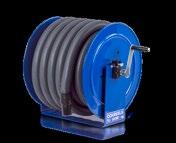
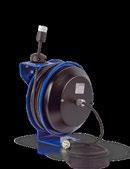
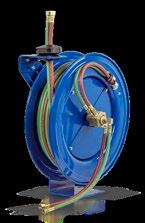
on the market, features a threaded body for low profile installation. No external fasteners or clamps are needed for securing in a plate. This allows for flexible mounting options along with the fact that pneumatic pressure can be supplied manifold style through the subplate or through external lines ported into the bottom of the module. The pull studs are offered in Zero Point, timing, and clearance configurations, similar to larger ZPS systems.
SP140 and K02 are part of the vast ZPS offering which uses either pneumatic or hydraulic modules to fix, position, and clamp all in one step. additionally, ZPS ensures repeatability of up to 0.0002”, and reduces cycle times by up to 90%. Users quickly and accurately locate and clamp vises or fixtures, or if preferred, attach retention studs to workpieces and then direct mount components for machining or welding, avoiding potential interference from jaws or clamps.
GFRP part inspection by robot with terahertz sensor
Multimodal non-destructive testing augmented with a new discipline.

Spectroscopy by means of ultra-short waves in the terahertz range is a very promising method for volumetric testing in non-conductive materials. It has been integrated for the first time as an additional technology in a multimodal accUBOT non-destructive testing (NDT) system from Fill as part of the three-year “aTTIc ” ( automated TeraherTz Imaging of composites and tooling profiling) project with international involvement run by EUrEK a Glass-fiber-reinforced plastics (GFrPs) and renewable natural materials, such as wood and cork, are being used ever more widely in industrial lightweight construction. Damage invisible to the naked eye after forming processes and mechanical processing makes continuous quality control of lightweight components indispensable.
Between radio and light waves
One relatively new technique for volumetric non-destructive testing (NDT) in non-conductive materials is spectroscopy by means of ultra-short waves in the terahertz spectrum (Thz-Imaging). This frequency band extends from approx. 100 G hz to 10 Thz (0.05 – 3.0 mm wavelength) and forms the boundary between radio and light waves. Thz-Imaging enables contactless examinations of GFrP or wooden parts without any special safety precautions. In addition, it can be used for examining foams or for determining the weld quality of thermoplastics.
alongside production systems for the automotive, aviation, sports, and construction industries, Fill develops and produces automated solutions for non-destructive materials testing. In addition, the company has developed a solution with the high-precision accUBOT robots that can operate both independently and jointly on linear axes running in parallel. These systems can perform inspections
46 | IMD March 2023 www.coxreels.com FOLLOW US: TOLL FREE | 800.269.7335 PRO GRADE HOSE, CORD, & CABLE REELS quality matters. every time. AIR / WATER | HYDRAULIC | PNEUMATIC | VACUUM | WELDING | POWER CORD SOLUTIONS FOR: AND MORE
with different methods. an additional rotatory servo axis at the tool center point also enables component testing in small, highly contorted areas.

Terahertz testing for industrial use
The possible uses of terahertz spectroscopy for plastic applications have previously been restricted to laboratory operations. Fill participated in the three-year aTTIc ( automated TeraherTz Imaging of composites and tooling profiling) EUrEK a project to develop a robot-based automated process for the production and subsequent inspection of drill holes in glass-fiber-reinforced composites. This process involves fully-automatic inspection of the material around the drill hole for defects using Thz-Imaging. Integration of a Thz spectrometer on a Flexchange quick connector flange ensured swift implementation of this technology in a robot-based inspection system from Fill. The flexible system enables use of Thz-Imaging for fiber-composite parts, even if these are contorted or freely formed. The same applies to inspection of the internal supporting structures of complex formed parts from additive production.
Important step towards product maturity
“In the aTTIc project, Thz-Imaging achieved Technology readiness Level (TrL) 5 as another technology for our multimodal automatic NDT systems,” explains harald Sehrschön, research and Development Team Leader at Fill. “Integration of Thz-Imaging spectrometry in fully-automatic NDT systems would enable a change in methodology in automated non-destructive component testing for many manufacturers. however, there is still much to do before application in a customer project.”
Further information can be found at: www.fill.co.at

Fastems Launches myFastems – New Digital Service Supports All Fastems Systems
myFastems is a complementary service for all Fastems customers, providing more advanced digital services for customers using Fastems’ Manufacturing Management Software (MMS) version 6 and above. c onsidered a
software-as-a-service, myFastems supplies all the digital tools needed to support customers in making sure their systems are up and running 24/7 for continuous availability and productivity.
The digital service is built as a progressive web application for easy access via web browser on a P c , tablet, or smartphone. It can also be combined with other services such as 8760 support, preventive maintenance, and software maintenance agreements for optimized solutions throughout the entire life cycle. myFastems is available for all current Fastems automation systems from January 2023 and will be pre-installed for new systems in the future.
myFastems brings transparency to any Fastems systems service history and spare parts usage and includes a comprehensive system overview for connected systems, as well as alarm-based recovery instructions and support request tickets. The system overview provides an updated status of all connected Fastems systems, making it easy for users to stay on top of production activities and solve any issues in a timely manner. Support is only one click away. With all necessary system information readily available, Fastems’ technical support can understand the situation on site better and faster, reducing critical downtime. Users are ensured their systems will be up and running as soon as possible.
INDUST rI a L MACHINERY DIGEST cOM IMD | 47 ESSEX PROVIDES Pre-Engineered Buildings Built to Withstand the Rugged Northeast Winters. Commercial, Industrial, and Agricultural Buildings Built to Satisfy Your Building Needs. Steel Structure, Sub-Structure, and Sheeting STRUCTURAL STEEL CO., INC. STRUCTURAL STEEL CO., INC. 800-323-7739 www.EssexStructuralSteel.com 607-753-9384 • FAX: 607-753-6272 • 607 Route 13, Cortland, NY 13045 Call For A Quote On Your Next Project

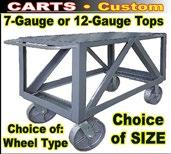

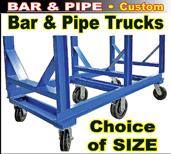






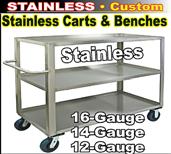





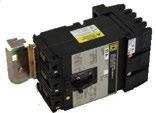




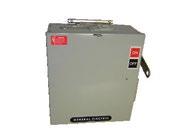
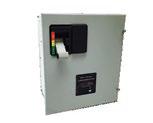

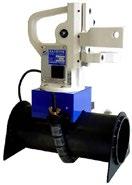

48 | IMD March 2023 sURPlUs bUyinG anD sellinG Standard-Direct.us Denver Breaker & Supply StayConnected www.DenverBreaker.com Mention SBSDA2023 for a 10% Discount! YES...WeHaveThat! One of the Nation’s Largest Inventory of New, Obsolete, Inspected & Tested Electrical Equipment! Circuit Breakers • Controls Panel Mount Switches Motor Bus Duct Plugs • Transformers Starters and More! Providing Same Day, Next Day Air Shipments for Emergency Needs! CALLUSTODAY! 855-4UR-BRKR WE ALSO BUY YOUR USED EQUIPMENT… EASY-TO-USE KANETEC MAGBORE DRILL GUIDES Offer sure, positive, firm footing! Model KCD-MN1 (Drill not included) Models now available for round pipe in two styles: Magnetic for ferrous steel or Chain grip for PVC, aluminum, and other non-ferrous materials. 630-860-1545 MAGNETIC DRILL STAND • COMPACT • LIGHTWEIGHT • HOLDS POSITIVELY • MAGNETICALLY ATTRACTS OR RELEASES • WEIGHS UNDER 12 LBS. For Round Pipe in Magnetic or Chain Visit: KANETEC.COM KANETEC@KANETEC.COM
$24.00
40% off list price
$24.00
www.enmco.com



$24.00 40% off list price

$24.00
40% off list price
(Limited time promotional pricing)
(Limited time promotional pricing)
5 other styles available
Electronics Customer Pre-settable LCD Timer Series TB45
ENM’s Series TB45 is a pre-settable AC/DC hour meter. It features a 6 digit LCD with self-powered CMOS circuitry. The unit is powered by an internal lithium battery.
Electronics Customer Pre-settable LCD Timer
Series TB45
Electronics Customer Pre-settable LCD Timer Series TB45
hour meter. It features a 6 digit LCD with self-powered CMOS circuitry. The unit is powered by an internal lithium battery.
ENM’s Series TB45 is a pre-settable AC/DC hour meter. It features a 6 digit LCD with self-powered CMOS circuitry. The unit is powered by an internal lithium battery.
ENM’s Series TB45 is a pre-settable AC/DC hour meter. It features a 6 digit LCD with self-powered CMOS circuitry. The unit is powered by an internal lithium battery.
ENM’s Series TB45 is a pre-settable AC/DC hour meter. It features a 6 digit LCD with self-powered CMOS circuitry. The unit is powered by an internal lithium battery.
Electronics Customer Pre-settable LCD Timer


Series TB45
ENM’s Series TB45 is a pre-settable AC/DC hour meter. It features a 6 digit LCD with self-powered CMOS circuitry. The unit is powered by an internal lithium battery.

MADE IN THE U.S.A
MADE IN THE U.S.A e-mail: customerservice@enmco.com TOLL FREE 888-372-0465




FREE 888-372-0465
MADE IN THE U.S.A
TB45 NEW AD feb 2021.indd 1 2/19/21 10:23 AM Check it out! IMDauctions-IMD102018-8th.indd 1 9/20/18 2:32 PM Welcome to the NEW IMDauctions.com Auctions Auction Services Machinery Listings IMDAuctions-6th-01-2019.indd 1 12/28/18 7:07 AM

e-mail: customerservice@enmco.com
TOLL FREE 888-372-0465

INDUST rI a L MACHINERY DIGEST cOM IMD | 49 ClassifieDs Machineshopweb.com americanMachineshop.com boothlocation.com ........... Visit online Today! ........... Visit online Today! Visit online Today! Need Work Benches ? workbenchmarket.com In Stock-Factory Direct workbenchmarket.com Need Work Benches ? workbenchmarket.com In Stock-Factory Direct Need Work Benches ? workbenchmarket.com In Stock-Factory Direct Need Work Benches ? workbenchmarket.com In Stock-Factory Direct OIL MIST & SMOKE IN YOUR SHOP? www.mistcollectors.com Tel: 1-800-645-4174 FURNACE CO,INC 40% off list price (Limited time www.enmco.com Electronics Customer Pre-settable LCD Timer Series TB45 ENM’s Series TB45 is a pre-settable AC/DC hour meter. It features a 6 digit LCD with self-powered CMOS circuitry. The unit is powered by an internal lithium battery. MADE IN THE U.S.A e-mail: customerservice@enmco.com TOLL FREE 888-372-0465 $24.00 40% off list price (Limited time promotional pricing) 5 other styles available www.enmco.com Electronics Customer Pre-settable LCD Timer Series TB45 ENM’s Series TB45 is a pre-settable AC/DC hour meter. It features a 6 digit LCD with self-powered CMOS circuitry. The unit is powered by an internal lithium battery. MADE IN THE U.S.A e-mail: customerservice@enmco.com TOLL FREE 888-372-0465 $24.00 40% off list price (Limited time promotional pricing) 5 other styles available www.enmco.com $24.00 40% off list price (Limited time promotional pricing) 5 other styles available Electronics Customer Pre-settable LCD Timer Series TB45 ENM’s Series TB45 is a pre-settable AC/DC
www.enmco.com
e-mail: customerservice@enmco.com TOLL
5 other styles available www.enmco.com $24.00 40% off list price (Limited time promotional pricing) 5 other styles available Electronics Customer Pre-settable LCD Timer Series TB45 ENM’s Series TB45 is a pre-settable AC/DC hour meter. It features a 6 digit LCD with self-powered CMOS circuitry. The unit is powered by an internal lithium battery. www.enmco.com Electronics Customer Pre-settable LCD Timer Series TB45 ENM’s Series TB45 is a pre-settable AC/DC hour meter. It features a 6 digit LCD with self-powered CMOS circuitry. The unit is powered by an internal lithium battery. MADE IN THE U.S.A e-mail: customerservice@enmco.com TOLL FREE 888-372-0465 $24.00 40% off list price (Limited time promotional pricing) 5 other styles available www.enmco.com Electronics Customer Pre-settable LCD Timer Series TB45 ENM’s Series TB45 is a pre-settable AC/DC hour meter. It features a 6 digit LCD with self-powered CMOS
MADE IN THE U.S.A e-mail: customerservice@enmco.com TOLL FREE 888-372-0465 $24.00 40% off list price (Limited time promotional pricing) 5 other styles
www.enmco.com $24.00 40% off list price
time promotional
5 other styles
Electronics
circuitry.The unit is powered by an internal lithium battery.
available
(Limited
pricing)
available
Customer Pre-settable LCD Timer Series TB45
www.enmco.com
40% off list price (Limited time promotional pricing) 5 other styles available www.enmco.com
(Limited
MADE IN THE U.S.A e-mail: customerservice@enmco.com TOLL FREE 888-372-0465 www.enmco.com
time promotional pricing) 5 other styles available
$24.00 40% off list price (Limited time promotional pricing) 5 other styles available
Electronics Customer Pre-settable LCD Timer Series TB45
ENM’s Series TB45 is a pre-settable AC/DC hour meter. It features a 6 digit LCD with self-powered CMOS circuitry. The unit is powered by an internal lithium battery.


50 | IMD March 2023 aDVeRTiseR inDex SERVING AMERICAN MANUFACTURERS FOR OVER 37 YEARS ARE YOU LISTED? We have launched our online, searchable directory with over 400 categories specifically designed for the industrial machinery industry. IF YOU’RE NOT LISTED, YOU’RE MISSING OUT! actek Manufacturing and Engineering Inc. — www.actekmfg.com Bc aTTcO, Inc. DBa Syclone aTTcO Service — www.skyhookmfr.com 7 Betenbender Manufacturing, Inc — www.betenbender.com 11 carell corporation — www.carellcorp.com 29 clamprite — www.clamprite.com 43 cOXrEELS — www.cOXrEELS.com 46 Denver Breaker & Supply — www.denverbreaker.com 48 Dynabrade, Inc. — www.dynabrade.com 5 Eagle Bending Machines — www.eaglebendingmachines.com 29 ENM co — www.enmco.com 49 Essex Structural Steel co. — www.essexstructuralsteel.com 47 Formdrill USa Inc. — www.formdrill-usa.com 15 h&K Equipment, Inc. — www.hkequipment.com 21 hMI div of Betenbender Manufacturing — www.betenbender.com 22 IMDauctions.com — www.imdauctions.com 49 Industrial Magnetics, Inc. — www.magnetics.com 39 Kanetec USa corp — www.kanetec.com 48 KhK Gears — www.khkgears.us 41 Lenzkes clamping Tools, Inc. — www.lenzkesusa.com 3 L&L Special Furnace co., Inc. — www.llfurnace.com 49 MacMillin hydraulic Engineering corporation — www.macmhydraulic.com 45 Northwest Machine Tool Expo — www.machinetoolexpos.com IBc Pro-Line — www.1proline.com 49 radwell International, Inc. — www.radwell.com Fc, IFc royal Products — www.mistcollectors.com 49 Schweiss Doors — www.schweissdoors.com 49 Sprinter Marking, Inc. — www.sprintermarking.com 27 Standard Direct — www.Standard-Direct.com 48 Stor-Loc — www.storloc.com 33 Tormach — www.tormach.com 19 Trim-Lok — www.trimlok.com 35

















MAY 10-11, 2023 OREGON CONVENTION CENTER PORTLAND, OR INNOVATION. TECHNOLOGY. PRODUCTIVITY. OWNED & PRODUCED BY: FOR EXHIBITING INFO, CONTACT JOYCE LORTZ: JLORTZ@FACILITIESEXPO.COM | (410) 598-3535 REGISTER FOR FREE AT: MACHINETOOLEXPOS.COM


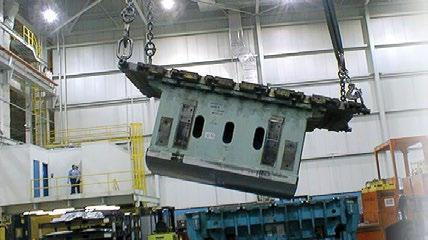

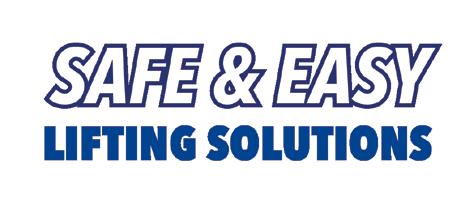
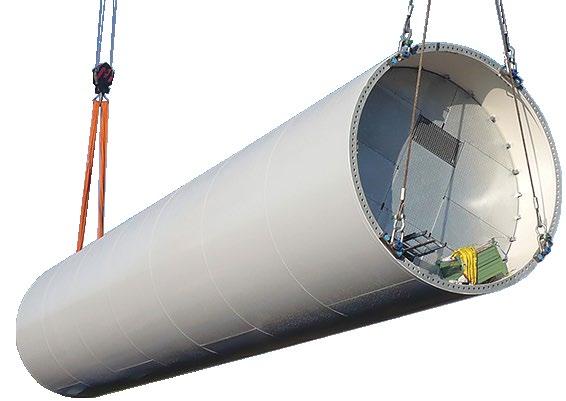



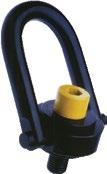









IndustrialMachineryDigest.com 3590-B hwy 31 South PMB #233 Pelham, aL 35124 PRSRT STD U.S. POSTAGE PAID ALABASTER, AL. PERMIT NO. 44 HOIST RINGS ACTEK 200% PROOF LOAD TESTED EACH RING HAS SERIAL NUMBERS ORDERS SHIPPED SAME DAY RATED LOAD 400 LBS - 250,000 LBS ISO 9001 Forged Street Plate™ Swivel Hoist Rings Side Load Hoist Rings Hoist Ring Kits Pivots180° Swivels360° Drop Forged Hoist Rings Mold Handler™ Swivel & Pivot Hoist Rings Round Base Swivel & Pivot Hoist Rings Forged Swivel Hoist Rings 800-752-7229 | SALES@ACTEKMFG.COM | ACTEKMFG.COM













 By: Trey Bell
By: Trey Bell























 By: Trey Bell
By: Trey Bell


















































































































































